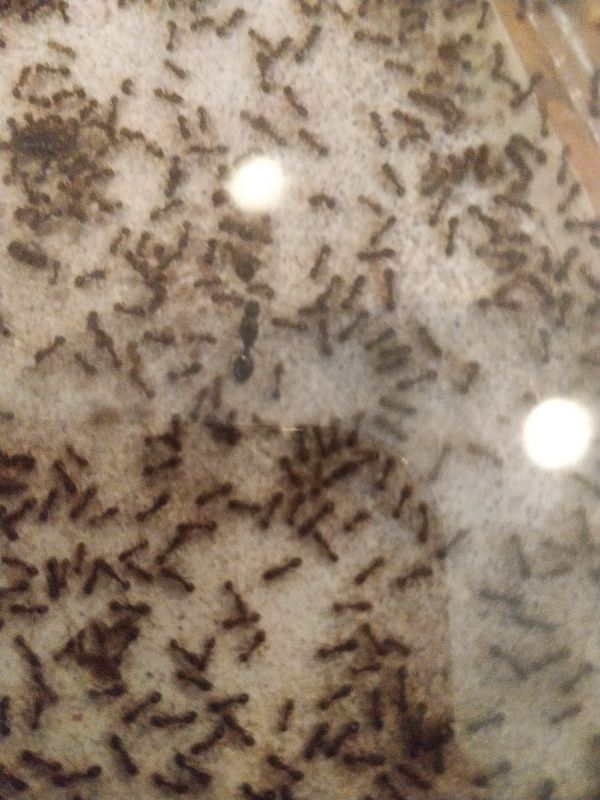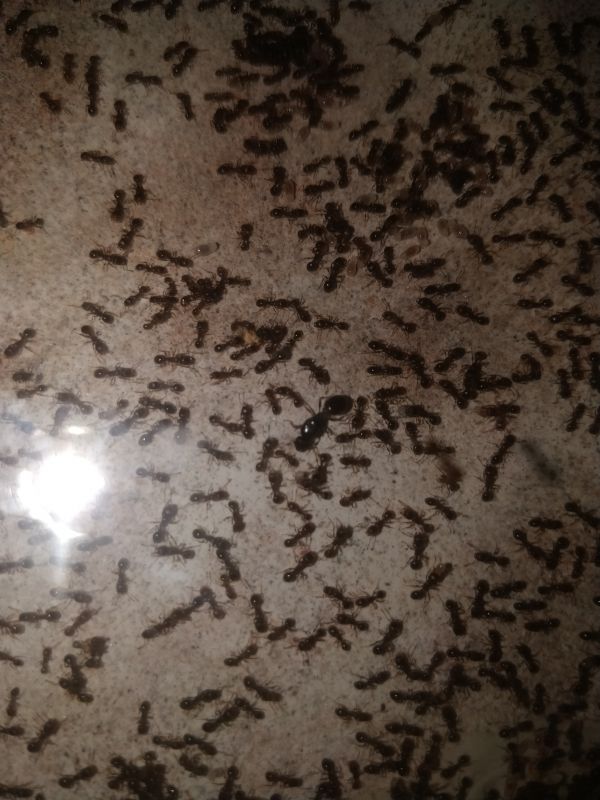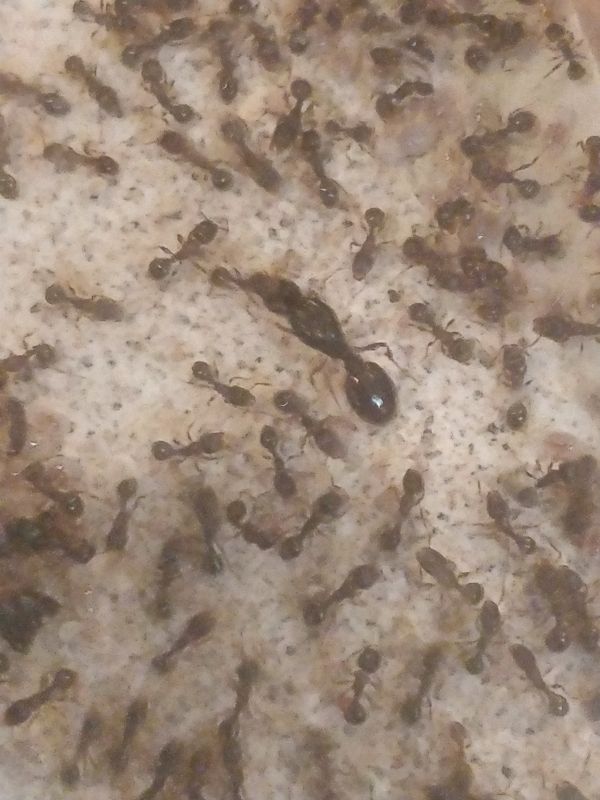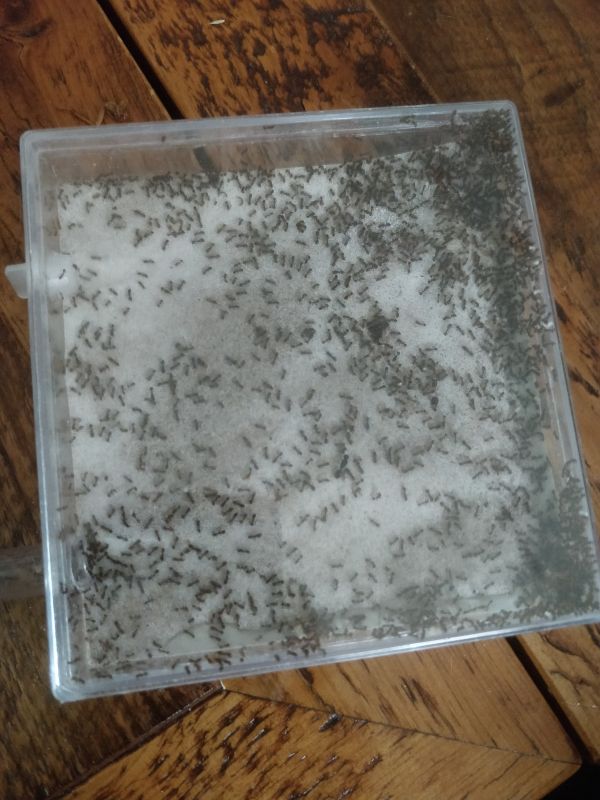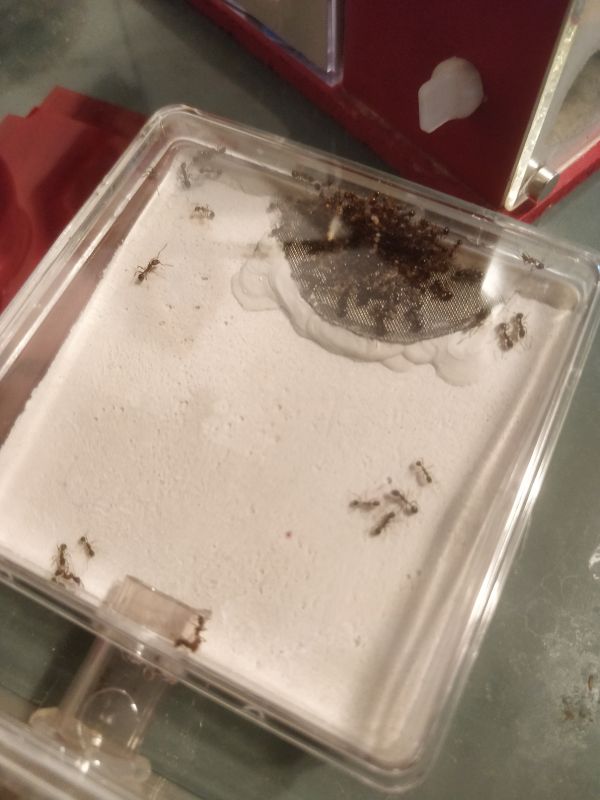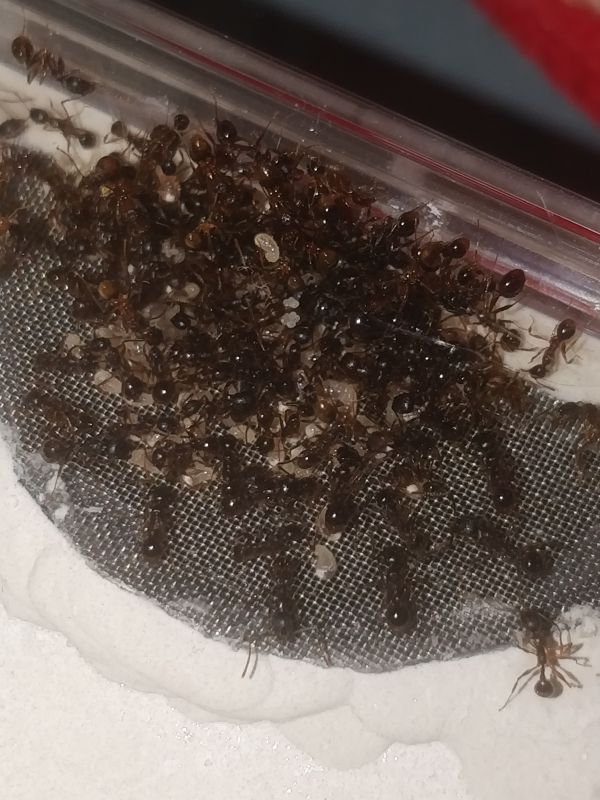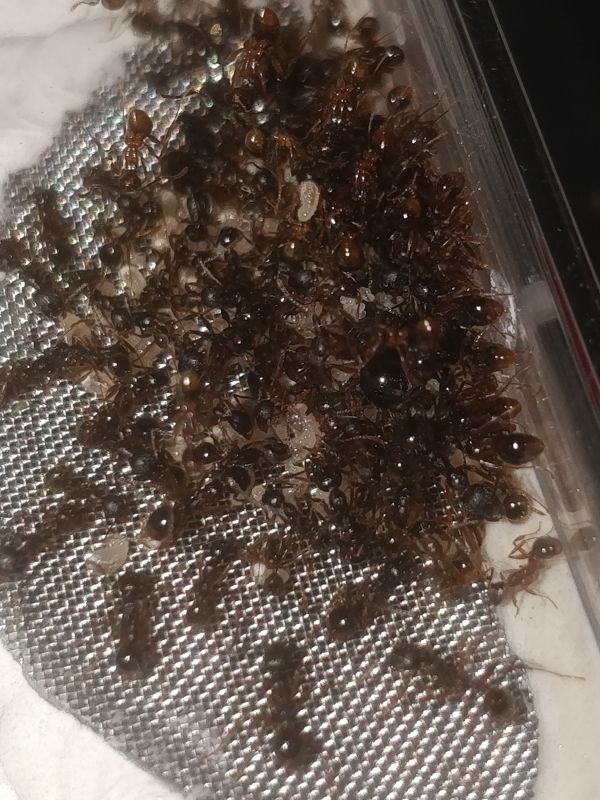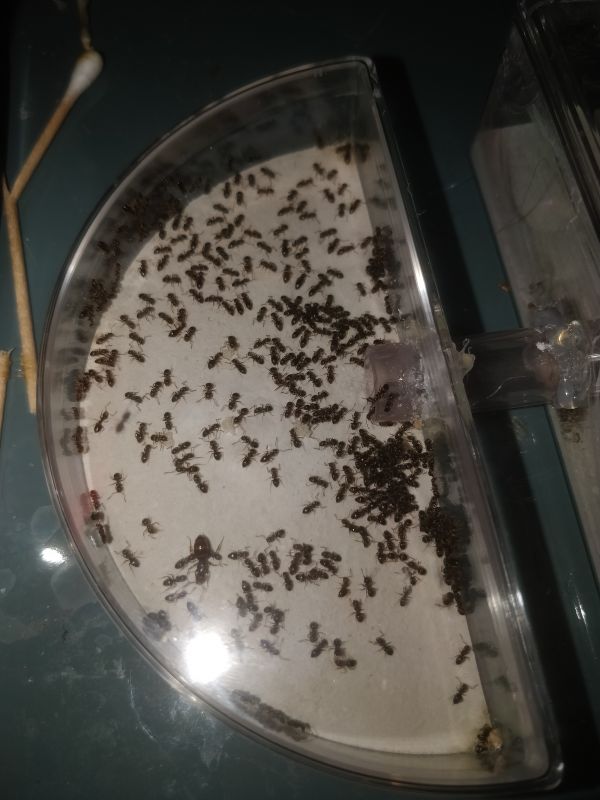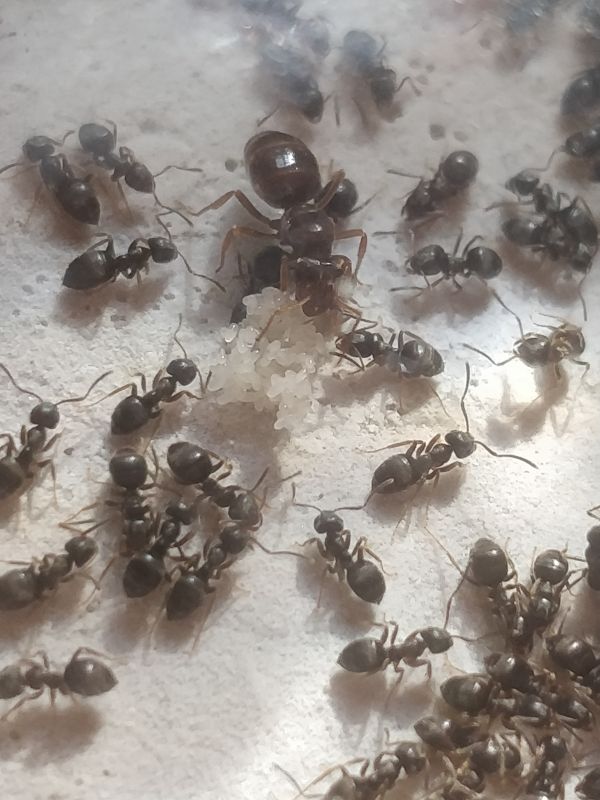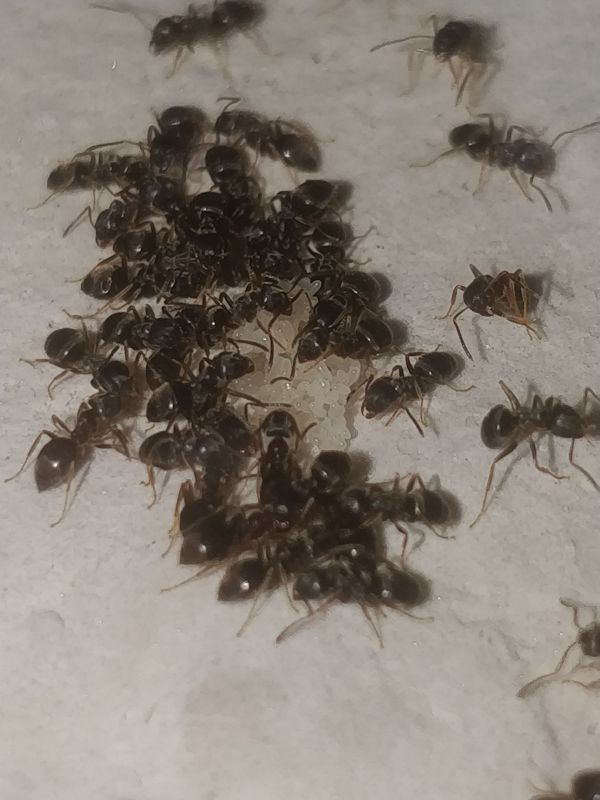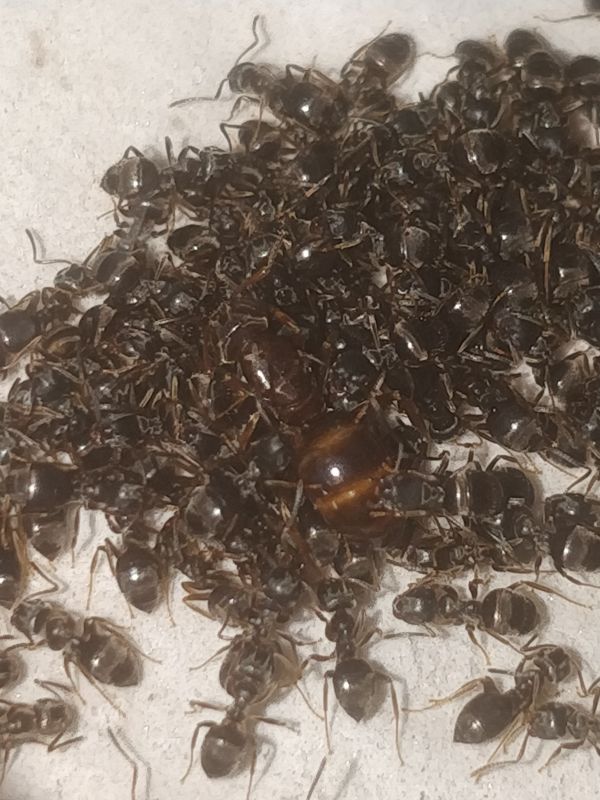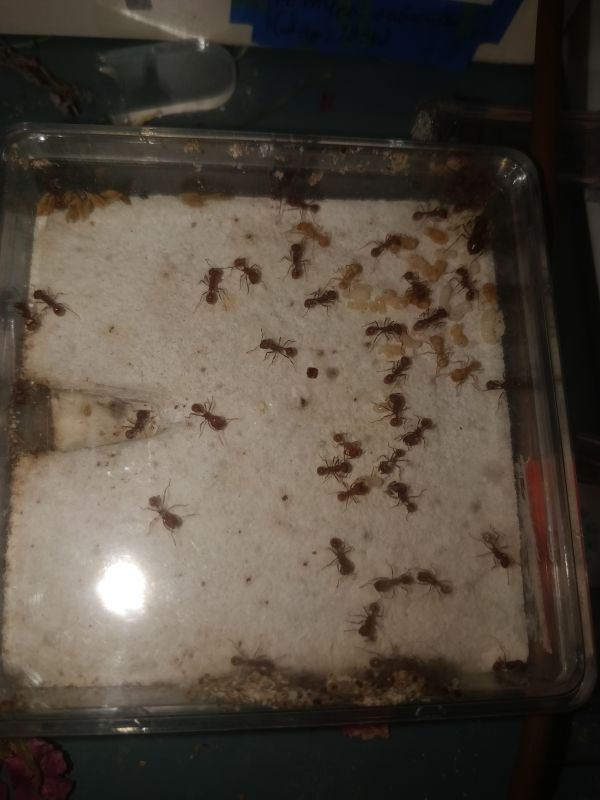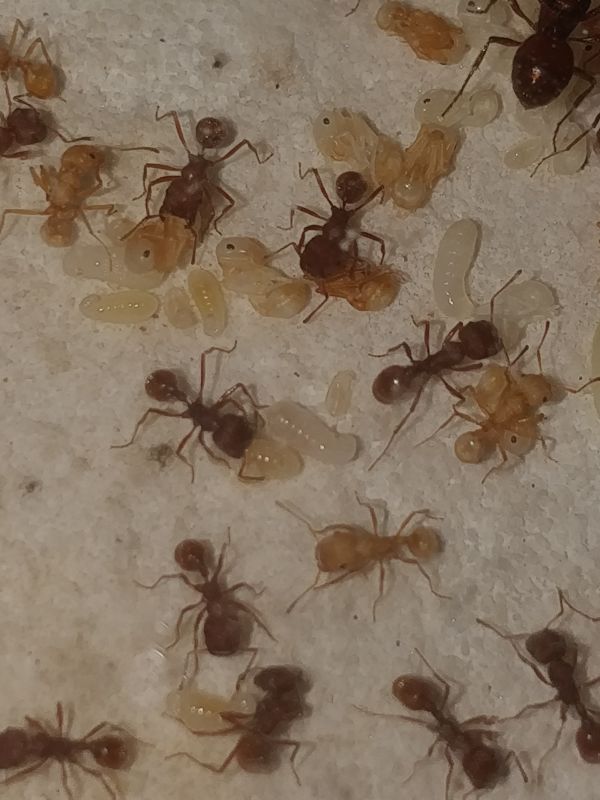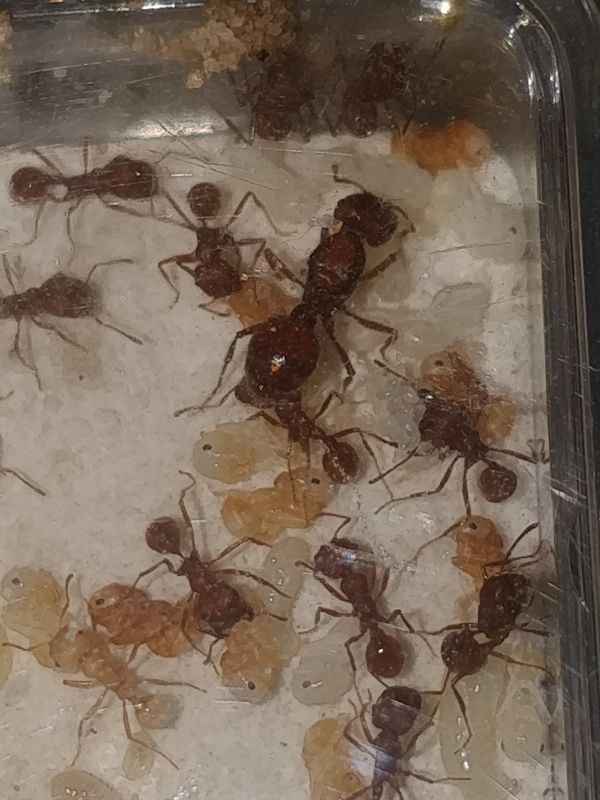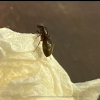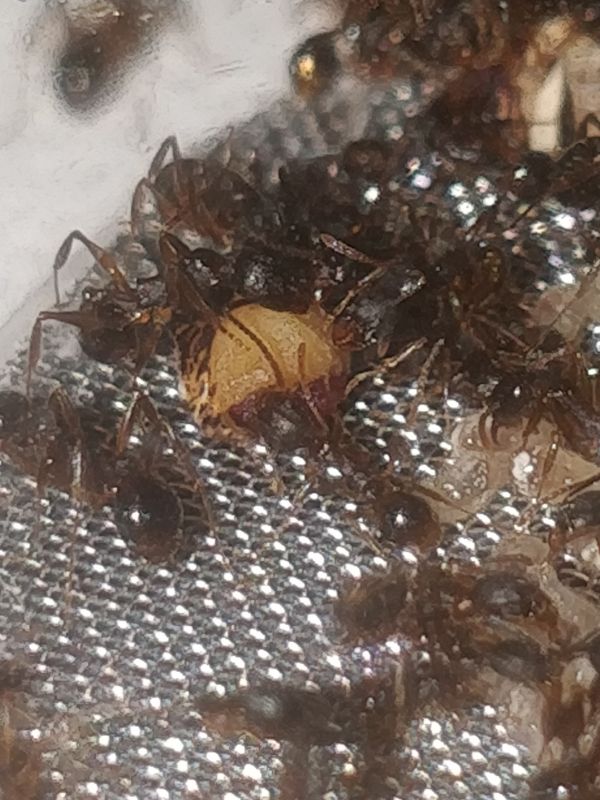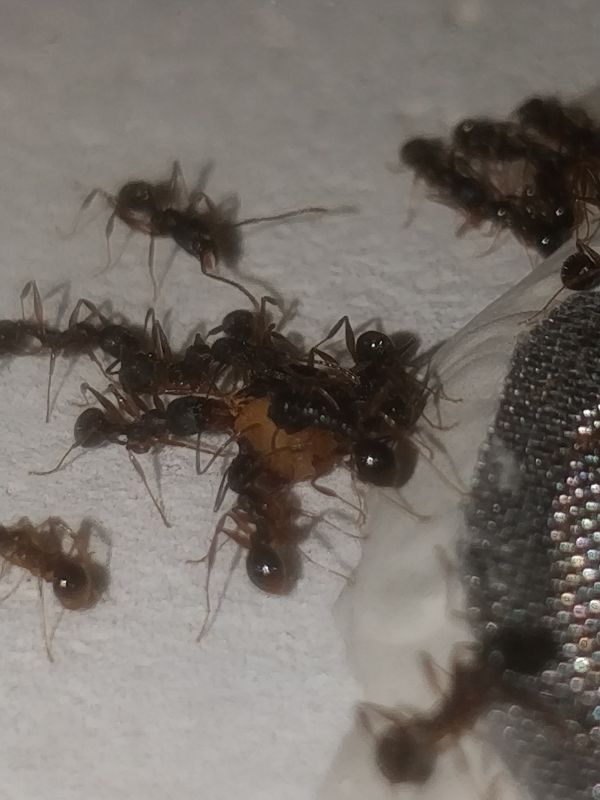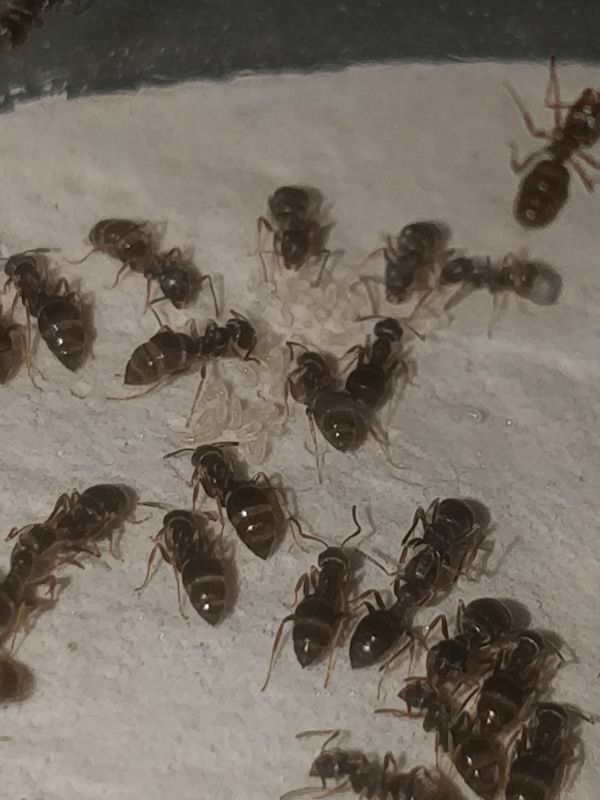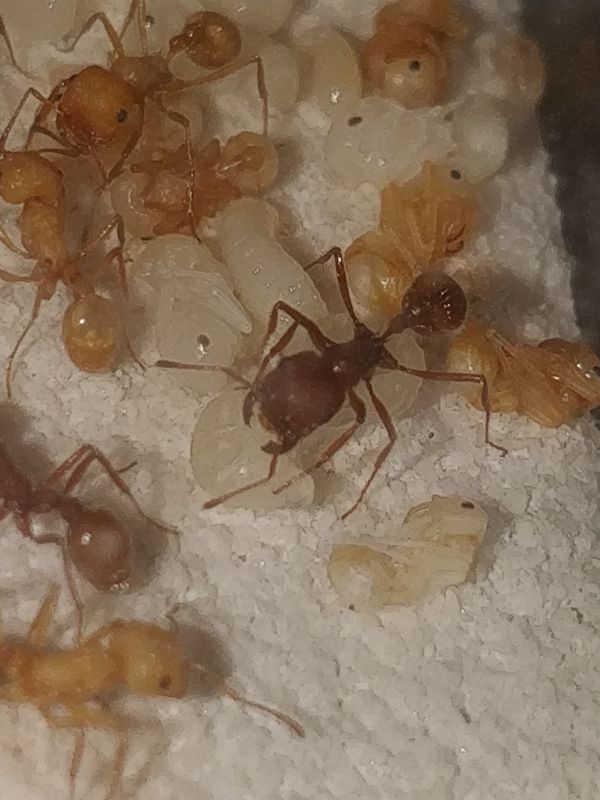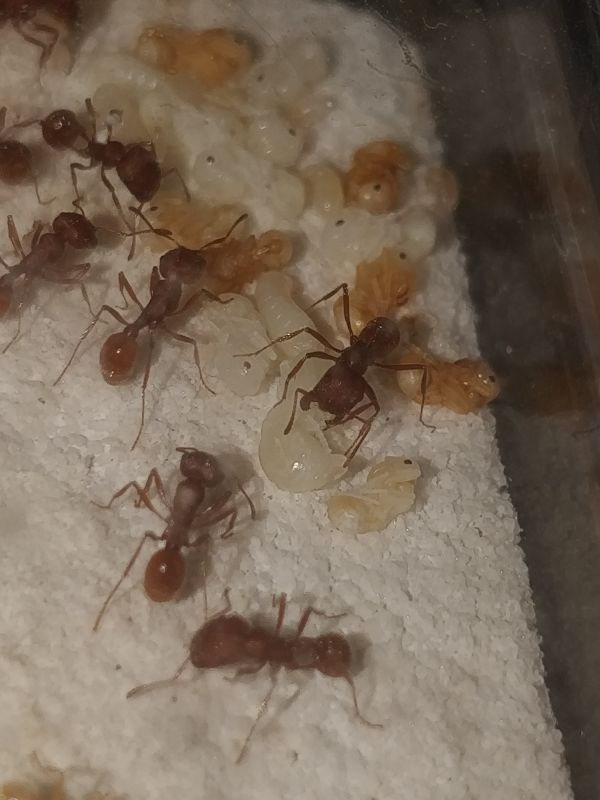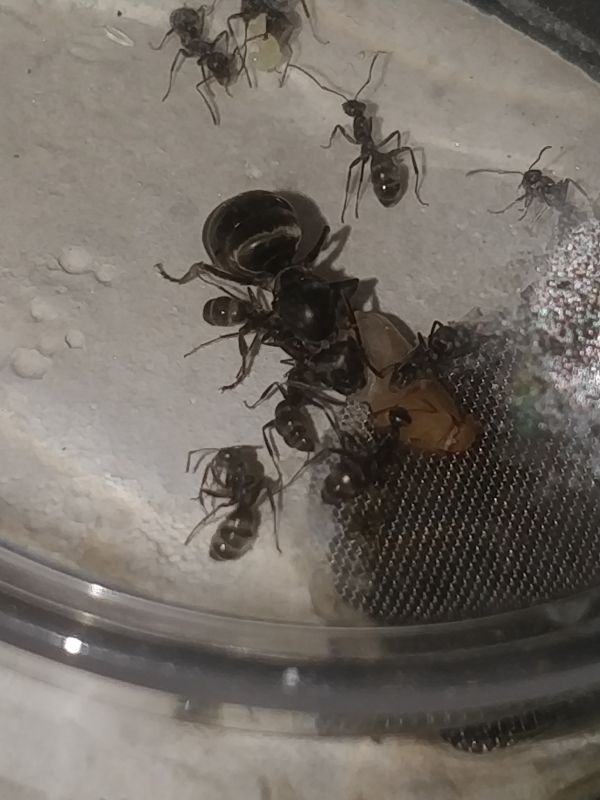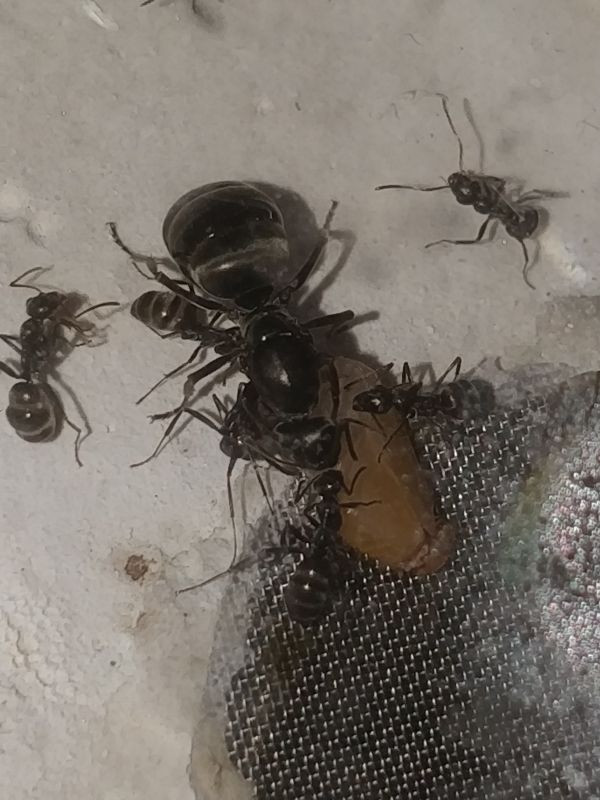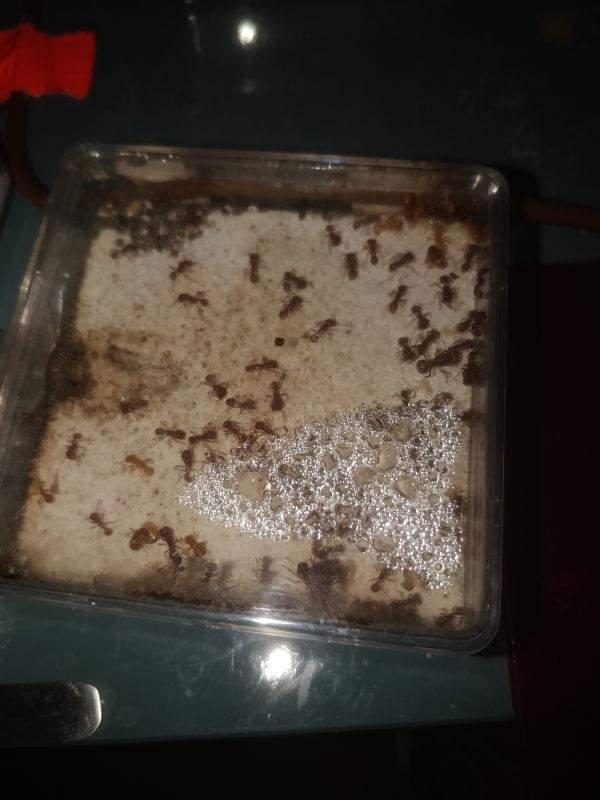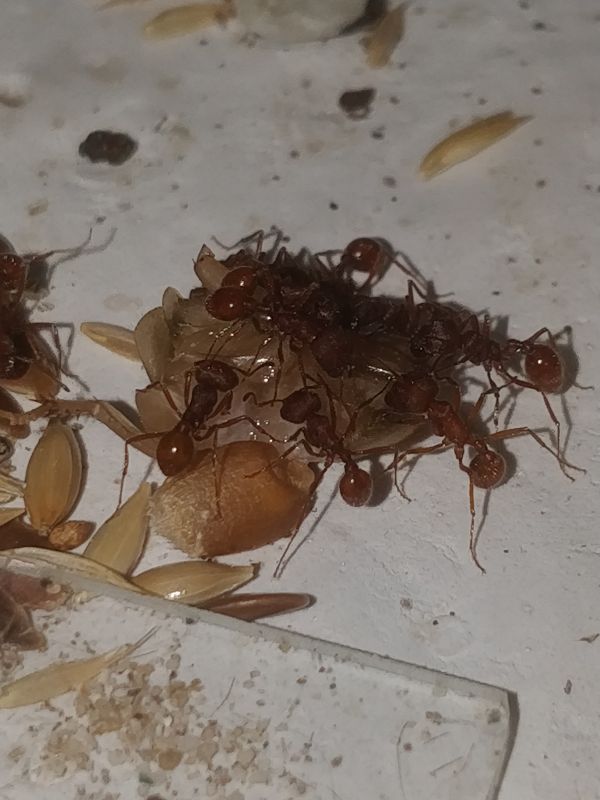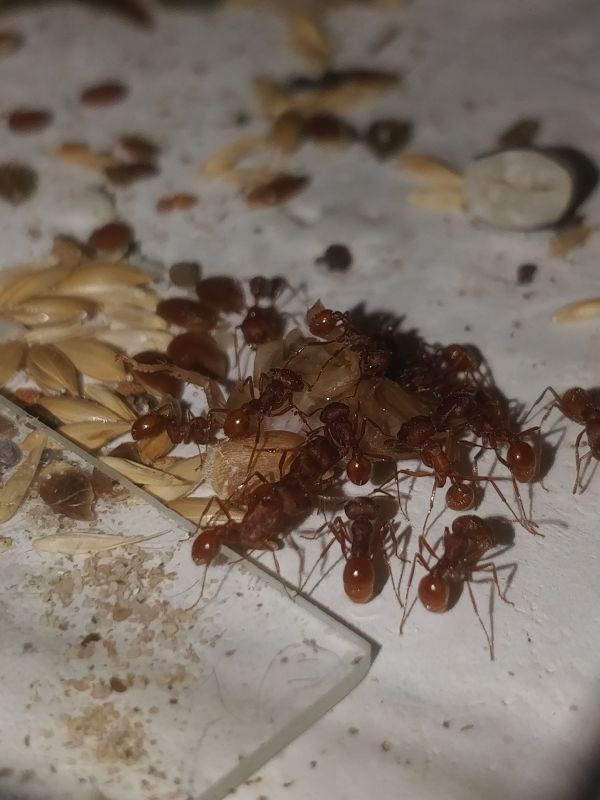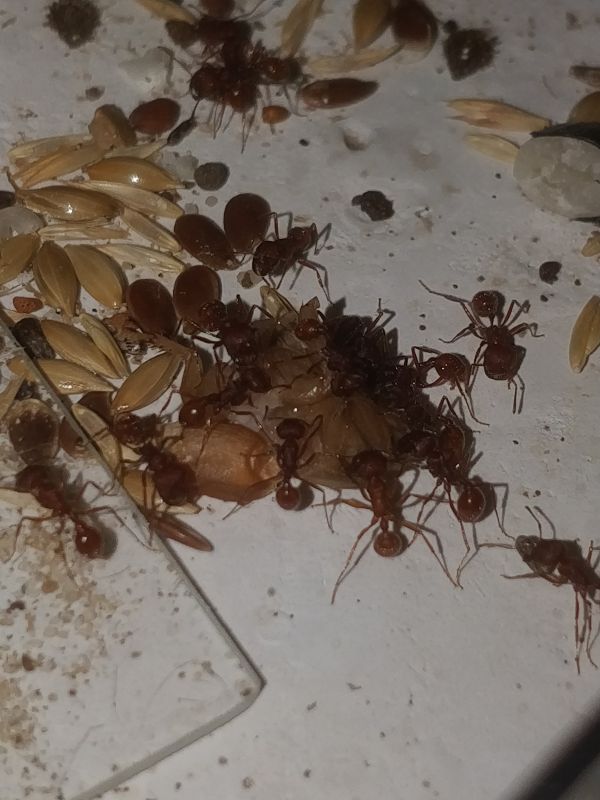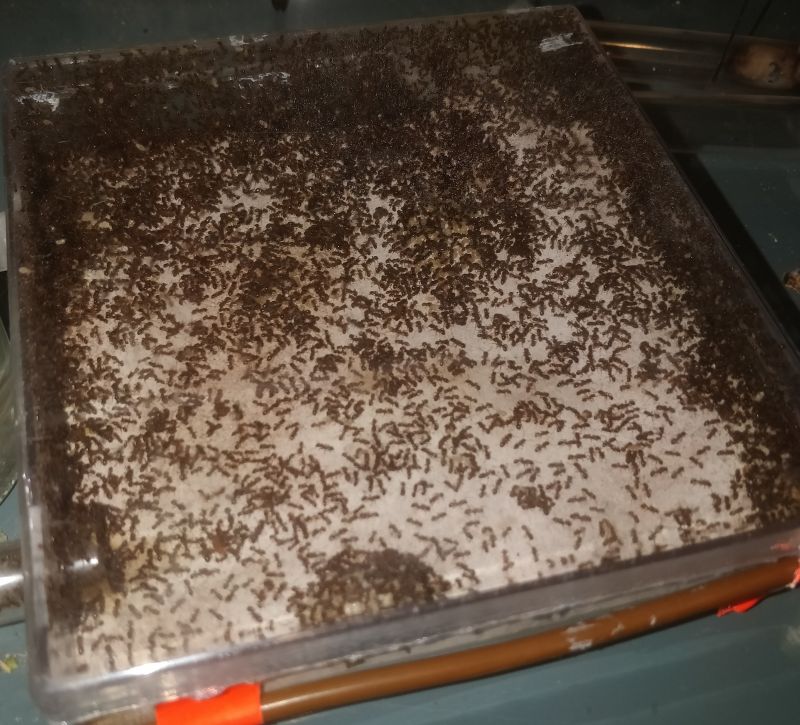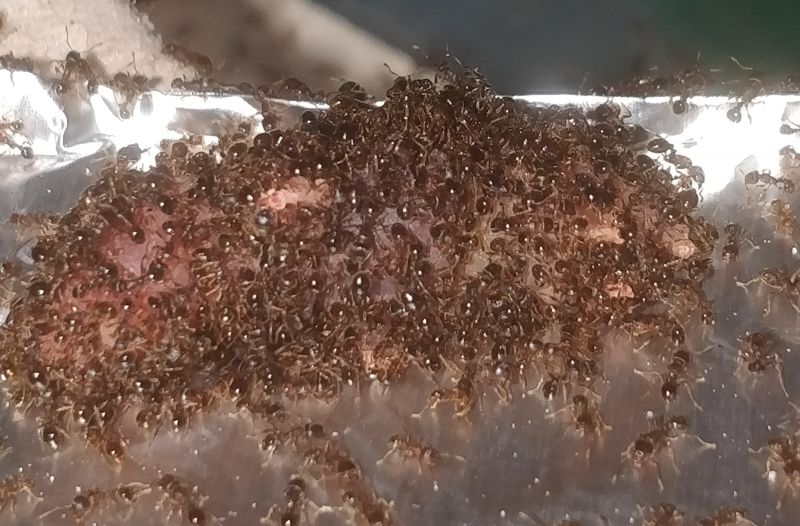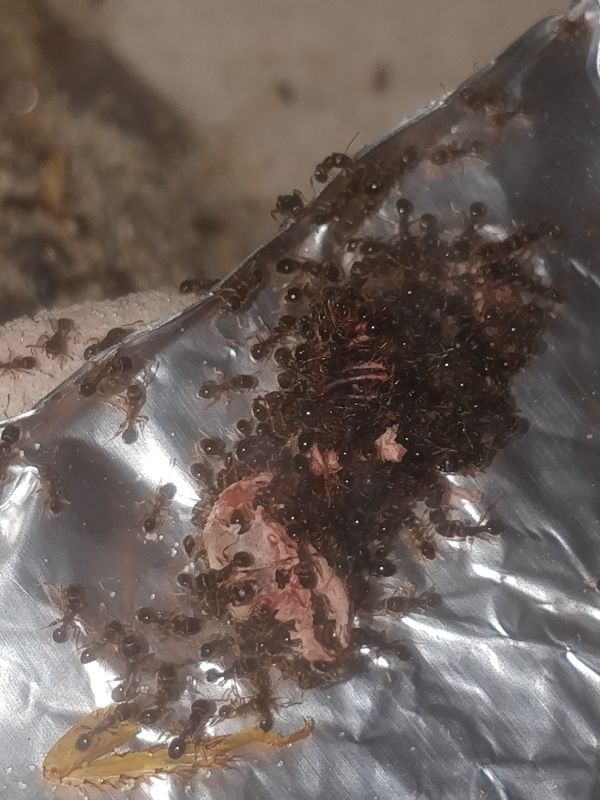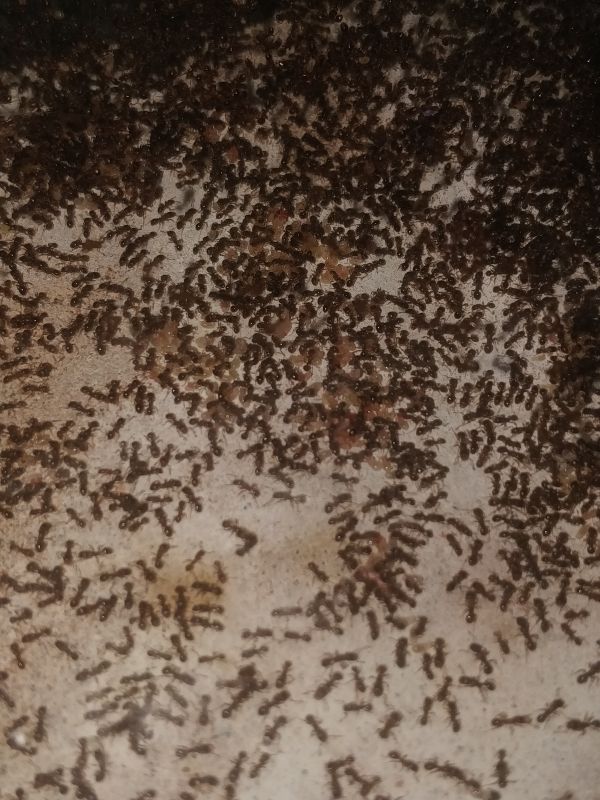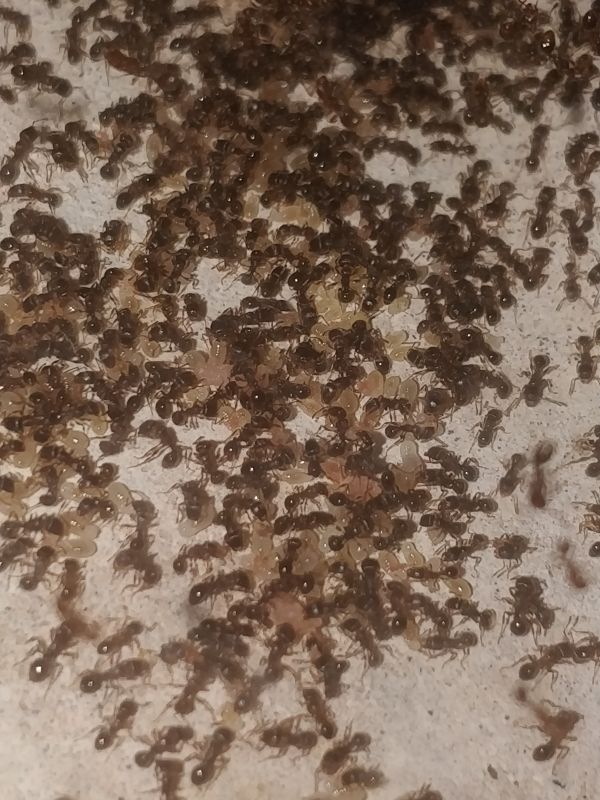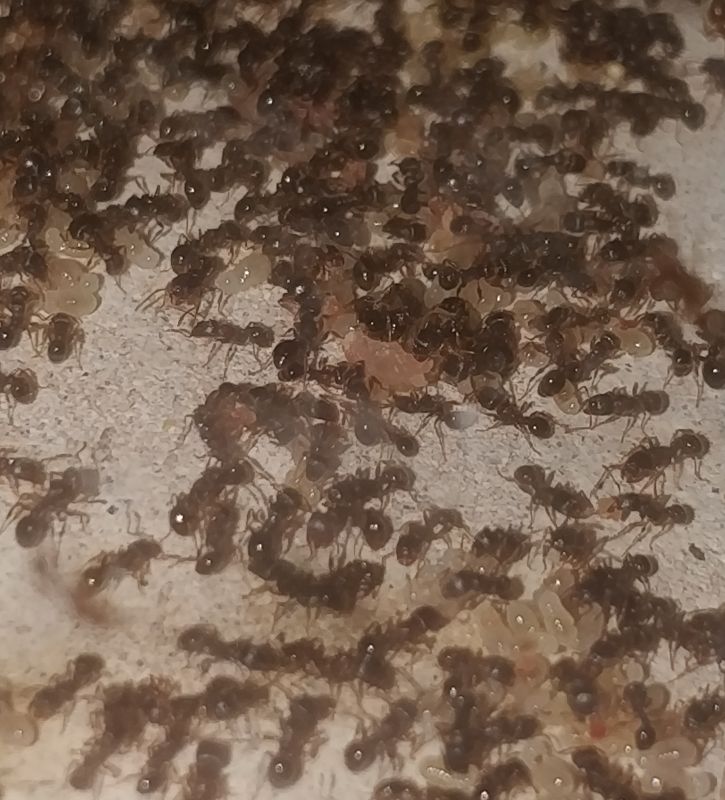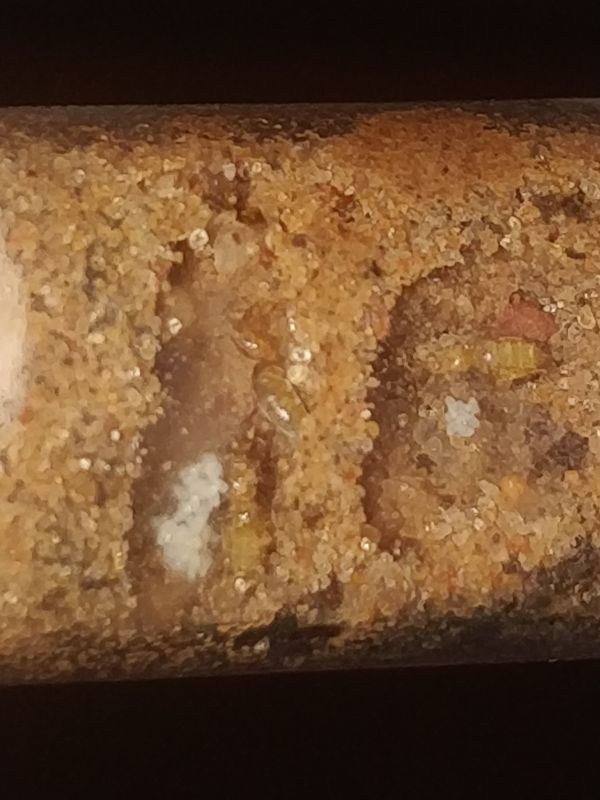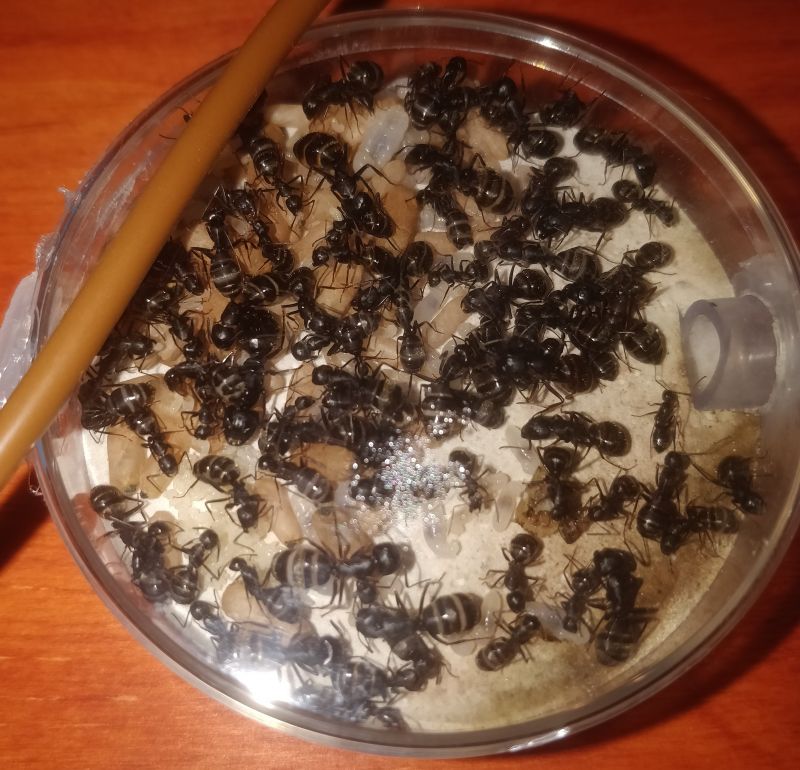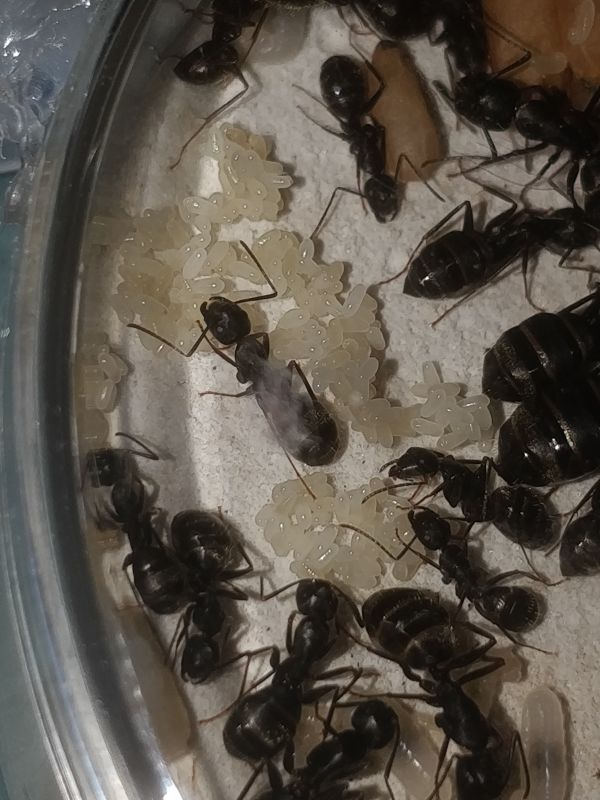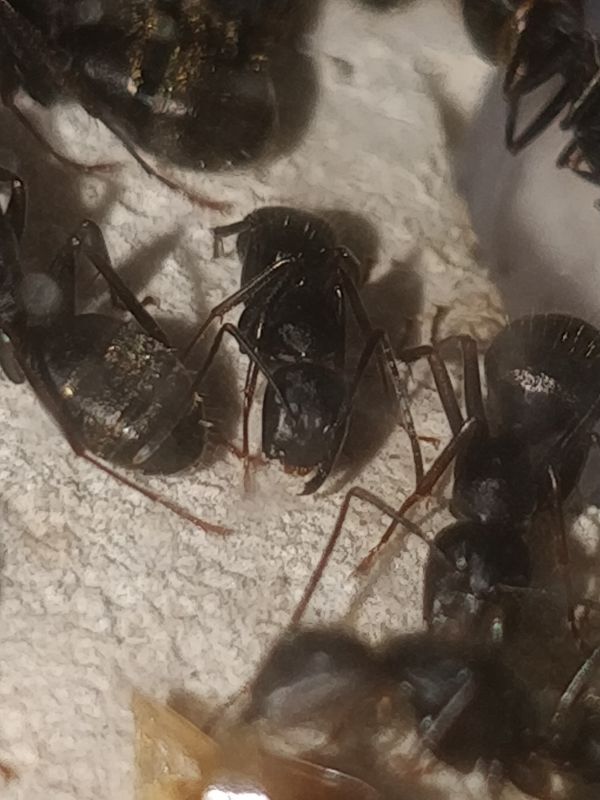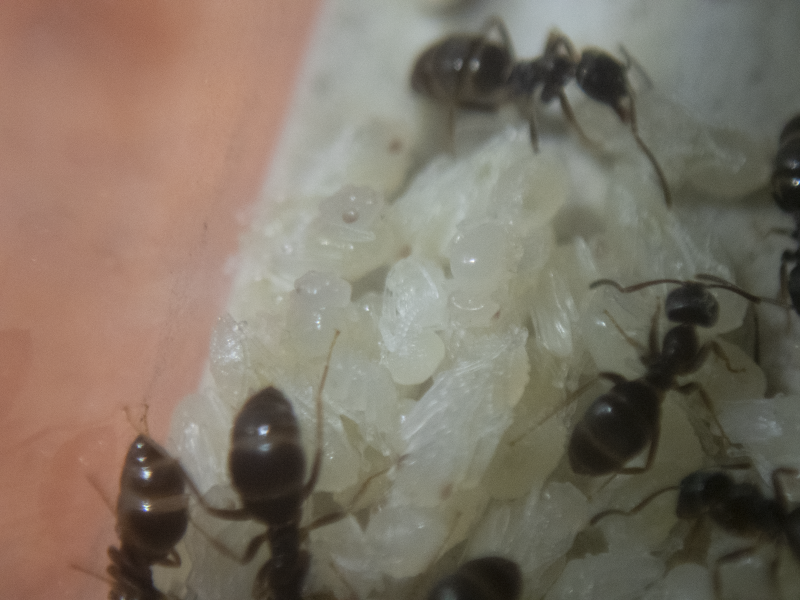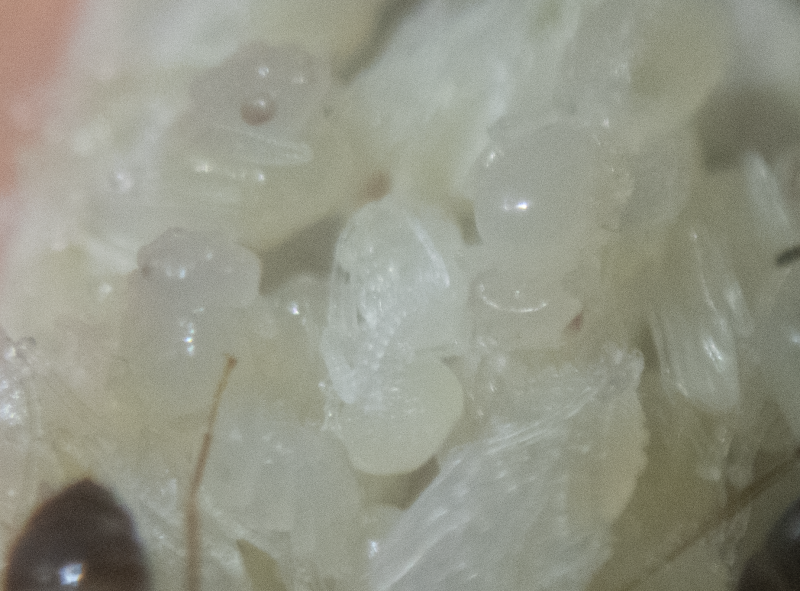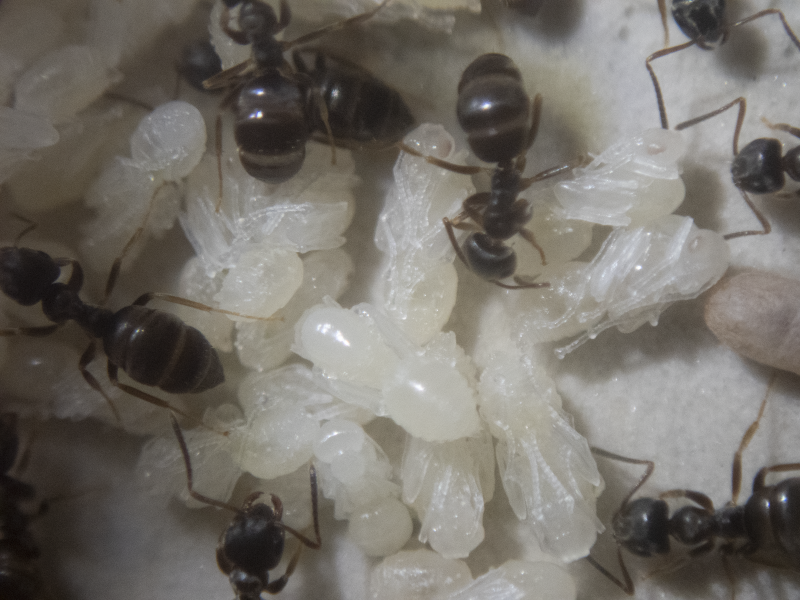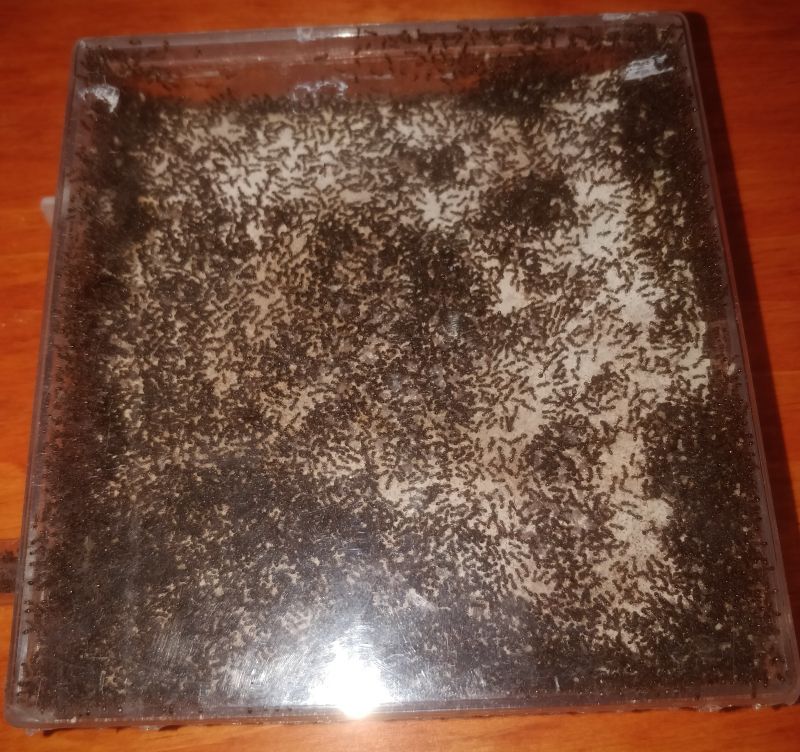The long overdue photo update, with the photos I got of each colony since I last posted their pictures.
Aphaenogaster tennesseensis
The A. tennesseensis colony has been doing great. My only complaint is that they love to cover the lid of their nest with garbage so that it’s hard to see in. The workers from first generation in captivity are smaller than the wild ones, but they should hopefully be back at full size soon. They were slightly picky at first, but now they’ll eat dubia roaches, fruit flies, blue bottle flies (at any life stage), dead Camponotus workers, and crushed nuts (particularly almonds). Their egg pile is currently like twice the size of the queen.
when I first got the colony
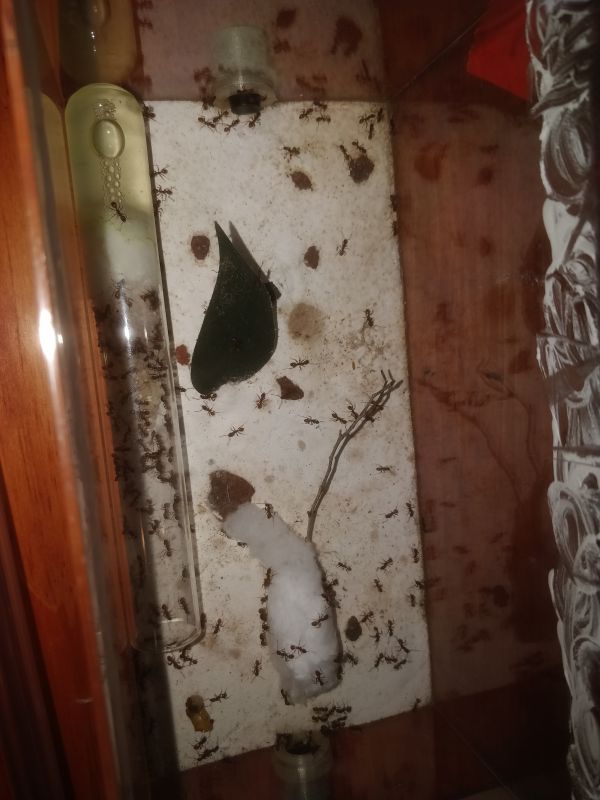
the colony after they moved to their new nest
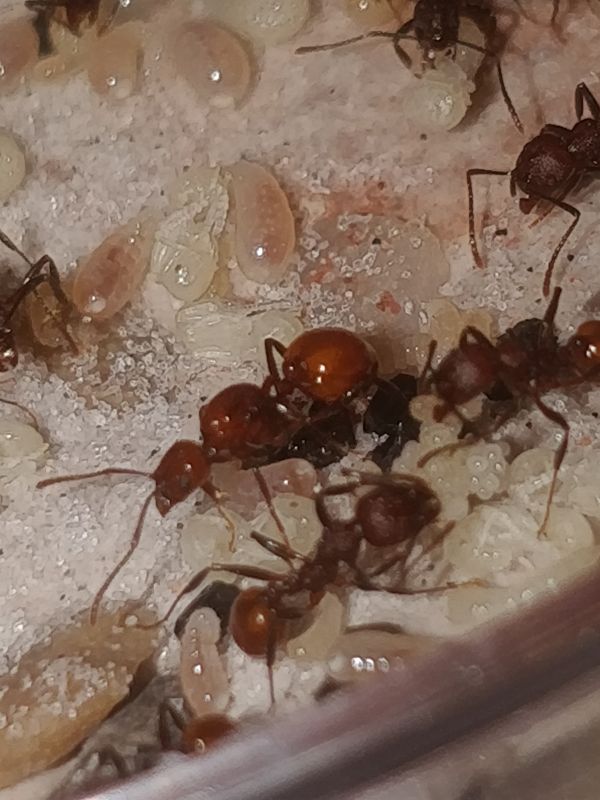
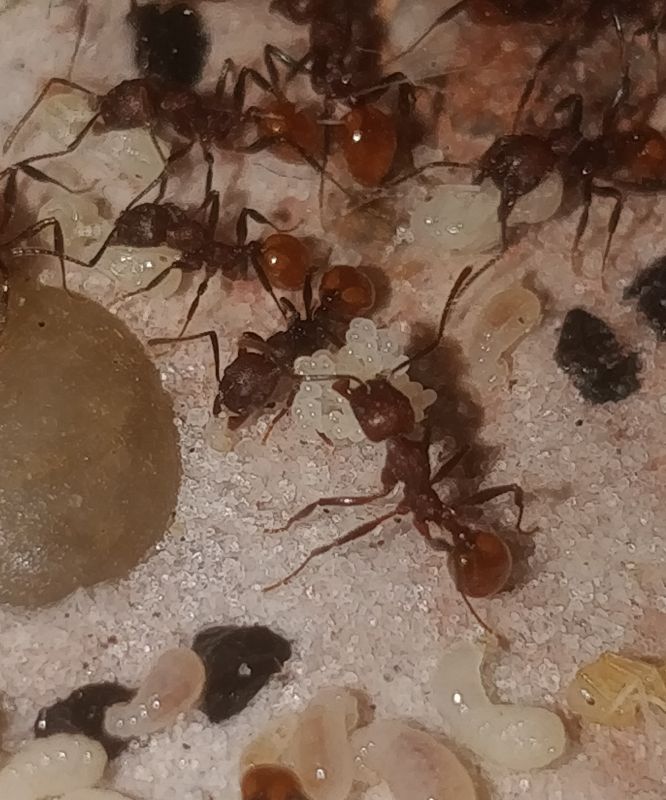
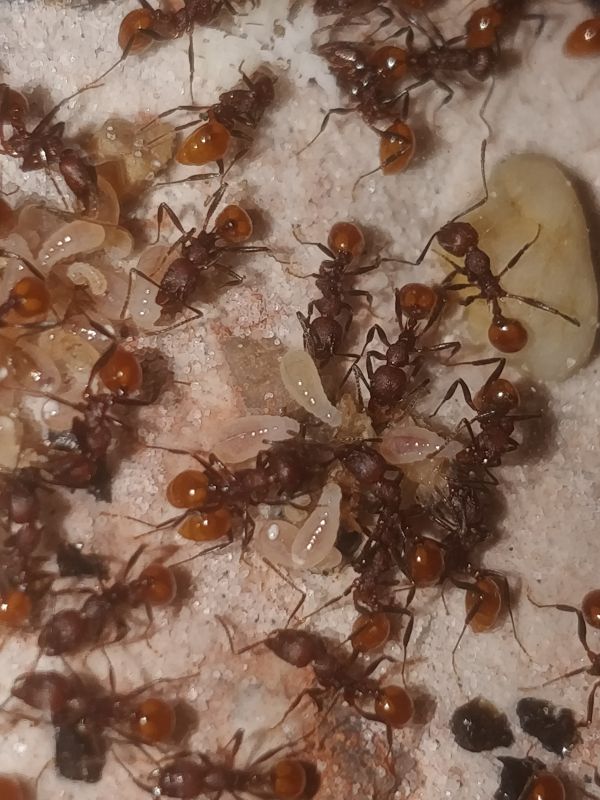
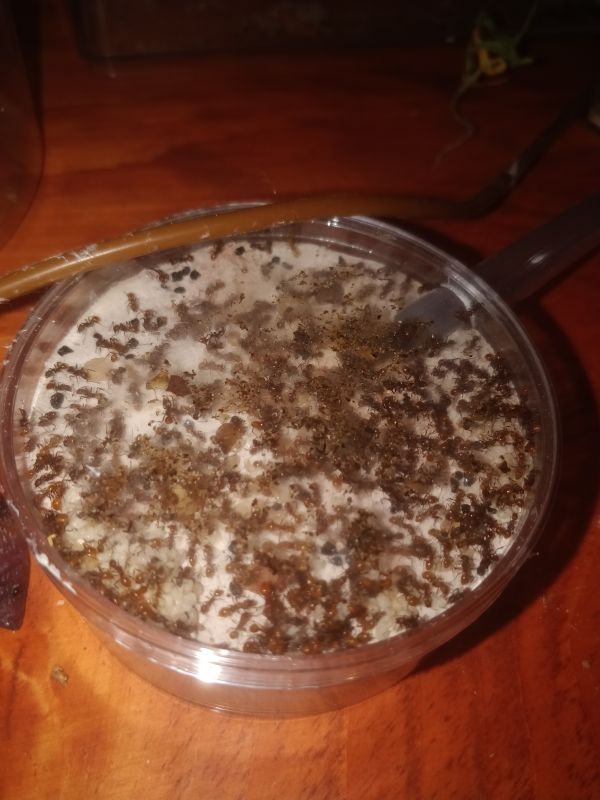
Camponotus chromaiodes
I went camping at Sand Ridge State Forest the weekend of May 28th. I was able to collect four recently flown C. chromaiodes queens from a rotting log. All four had either eggs or no brood. One of the four is a noticeably darker color morph than the other three. I’m thinking on a way to make an oligogynous setup for them.
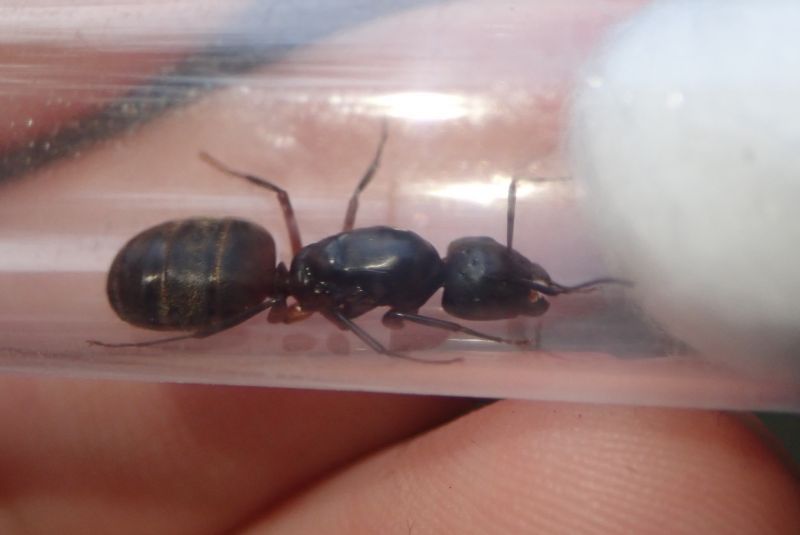
Camponotus pennsylvanicus
Their spring brood boom has officially ended. At its lowest, they only had a few eggs and small larvae. Luckily, it looks like another batch is starting up.
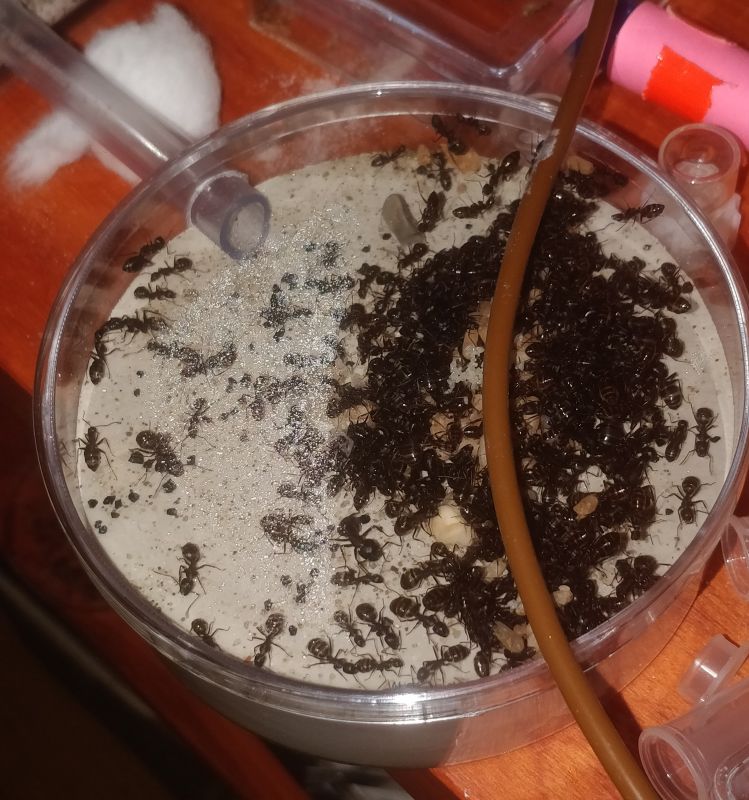
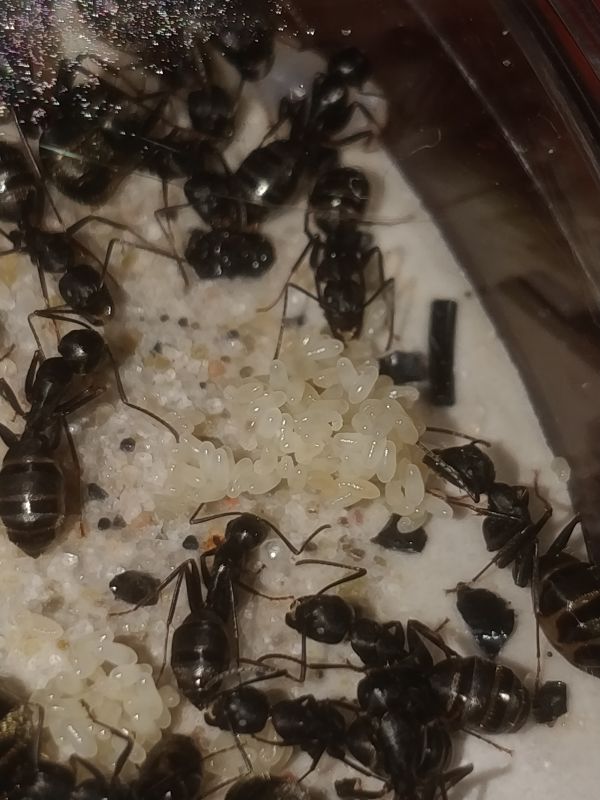
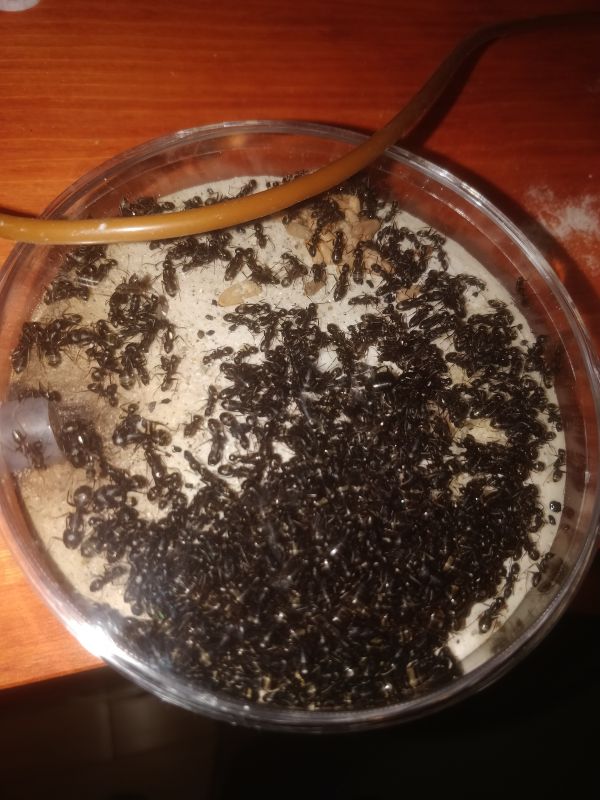
Camponotus subbarbatus
I found three C. subbarbatus queens from the same log as the four C. chromaiodes queens. I haven’t had a successful Myrmentoma colony before, so I'm glad that I have another shot, especially since it’s the one of the prettiest Myrmentoma around here, and I’ll have three shots at it.
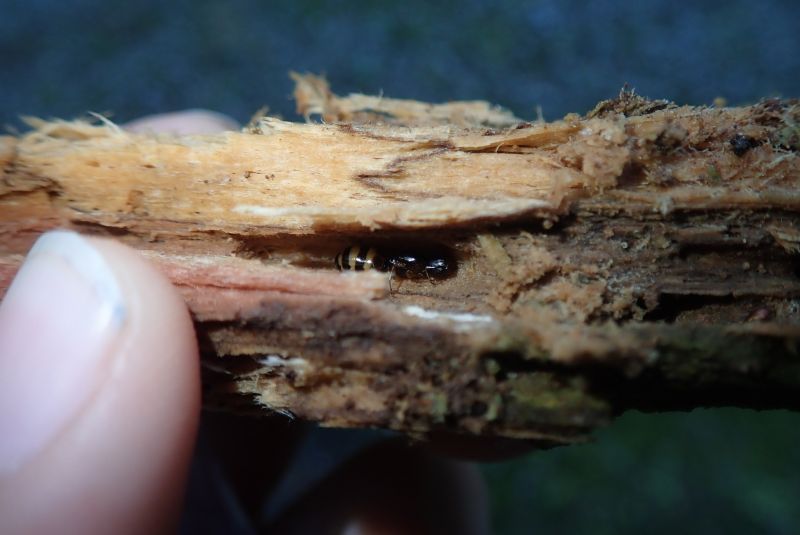
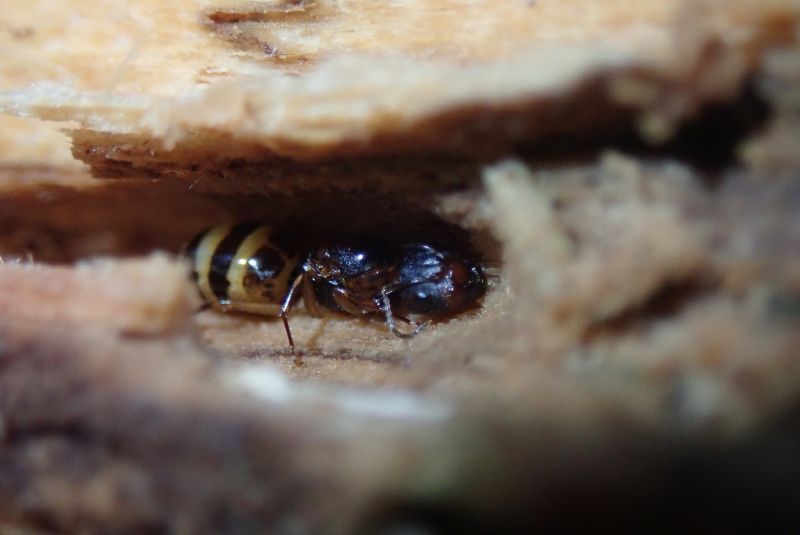
Formica obscuriventris
It’s been mostly smooth sailing since I got them. Their brood pile didn’t grow as large as I expected, but at least they’re getting some new workers. A week or so ago, I noticed that out of nowhere the outworld had gotten a massive grain mite infestation. A day or two later, I noticed some parasitic mites on the queens. After closer inspection, the parasitic mites seemed to be on at least half the colony, especially the larger workers. I moved them to a completely new setup to get them away from the mites. I plan to rotate their setup every week or two until the mites are gone, to prevent the mite eggs from being able to hatch and start a new generation. I also bought some Stratiolaelaps scimitus (Hypoaspis miles) mites, which are predatory on, among other things, other mites. The setup rotation plus the predatory mites should hopefully be enough to get rid of the parasitic mites.
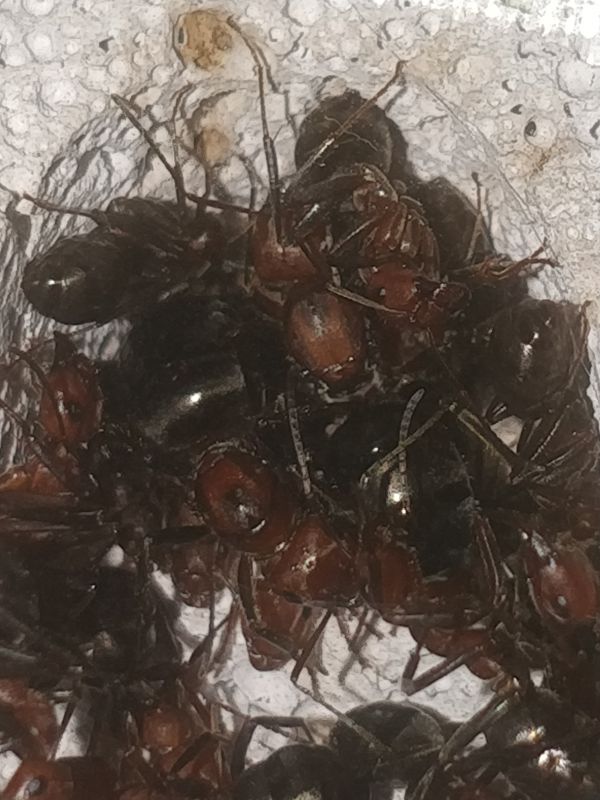
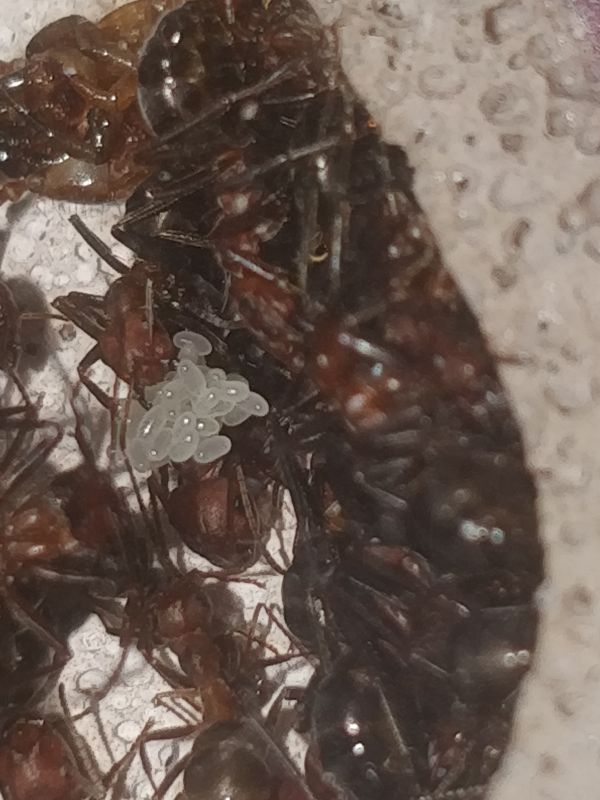
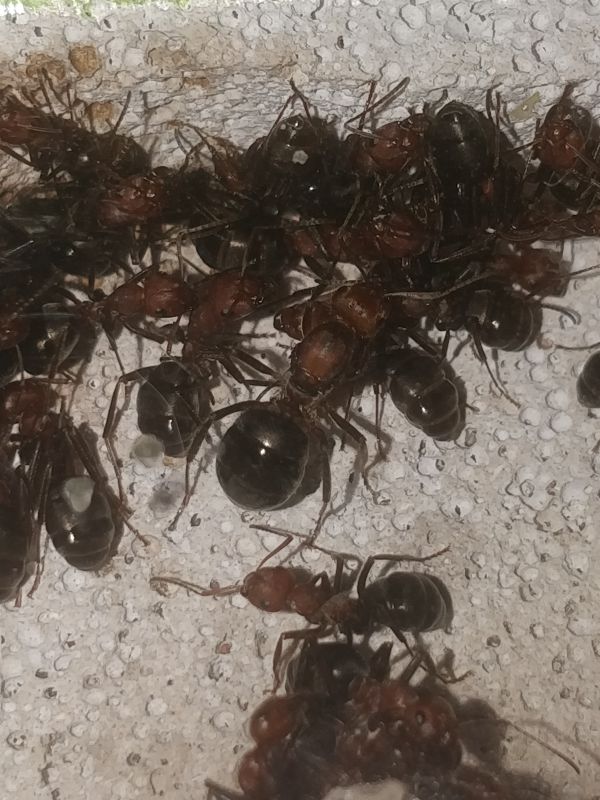
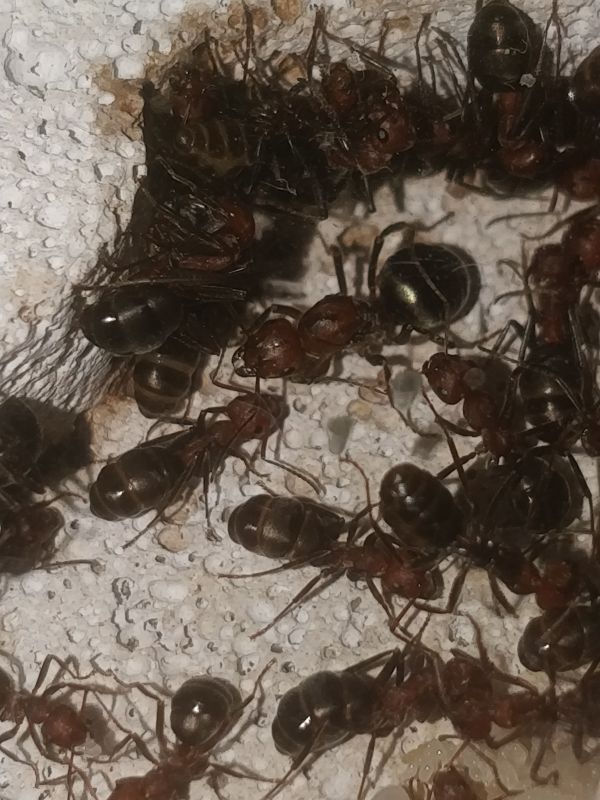
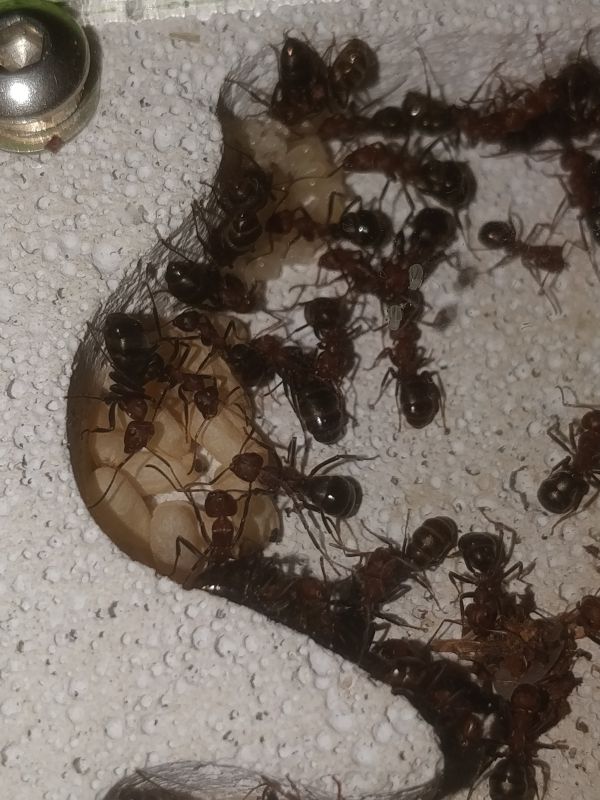
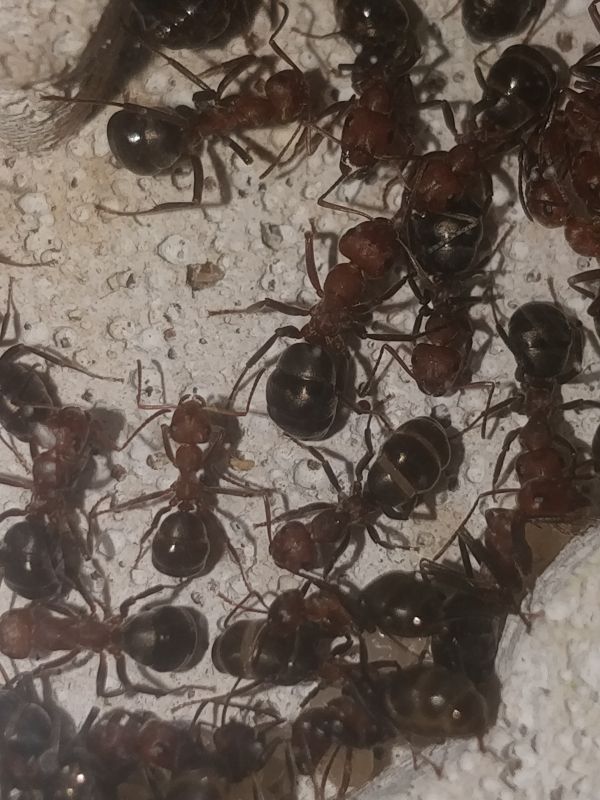
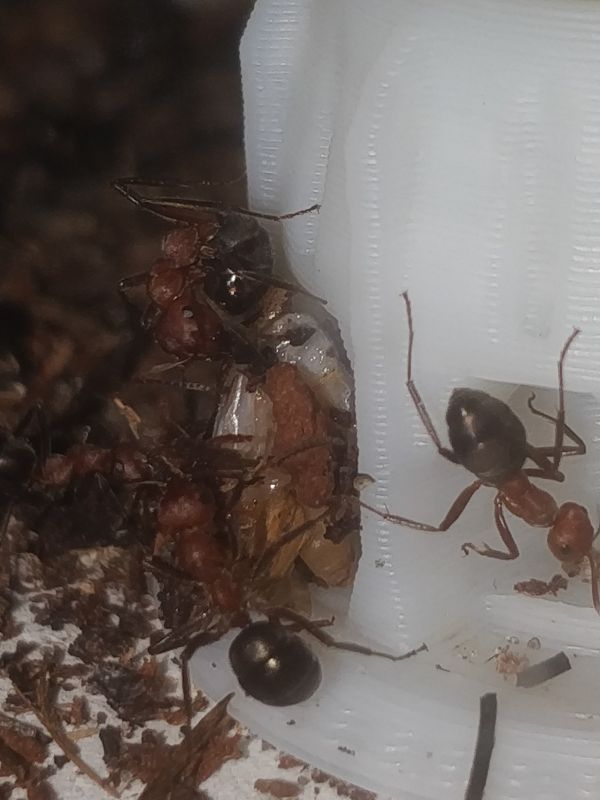
the mites
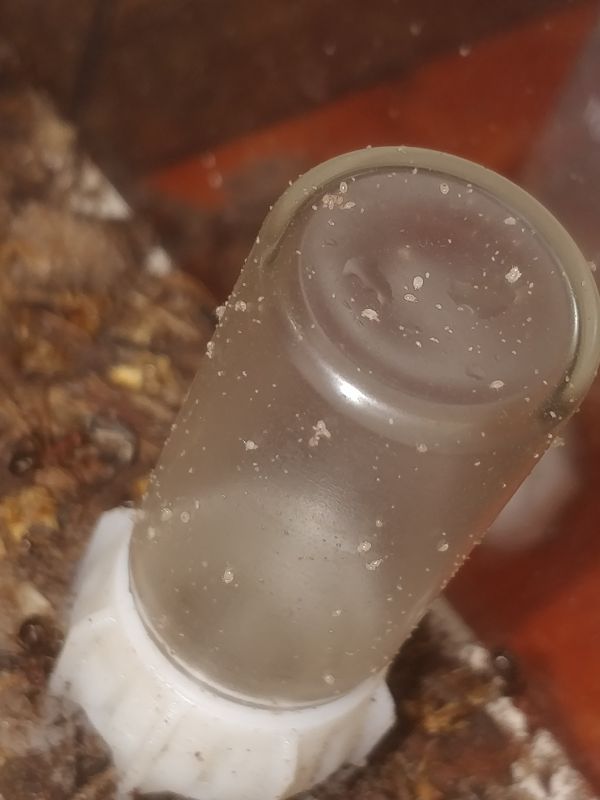
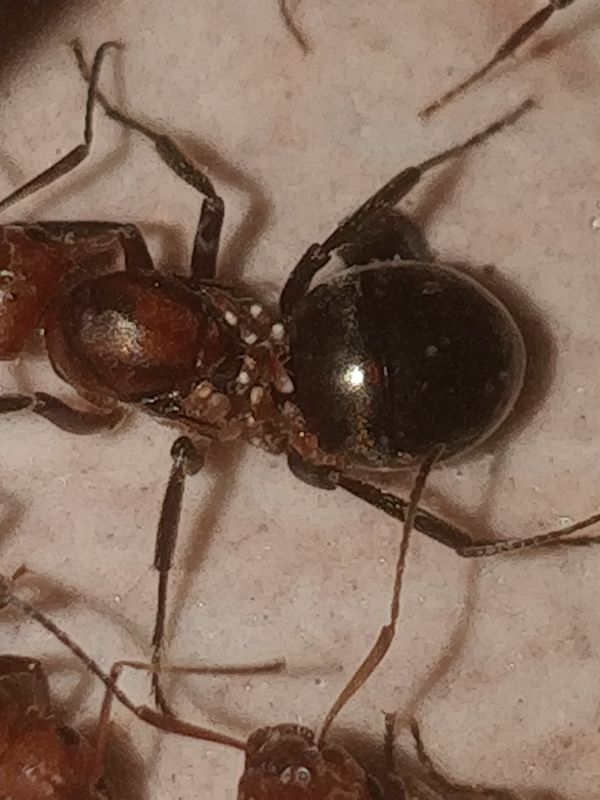
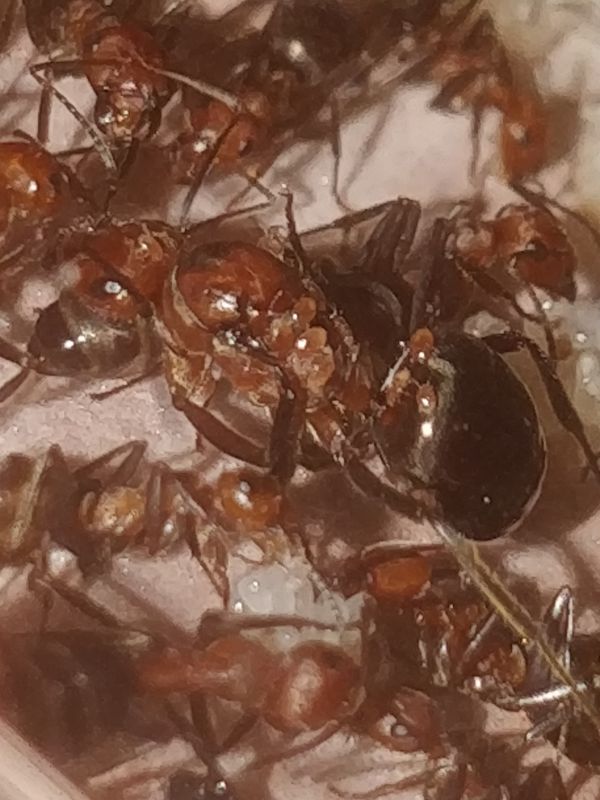
Lasius speculiventris
I haven’t been able to get a new population estimate lately, but the colony is now biological workers by a vast majority. Their old nest was getting so crowded that they started storing pupae in the tube and in the outworld. I moved them to a larger 4” petri dish nest, which they’re already filling most of, though they definitely still have some room to grow in it.
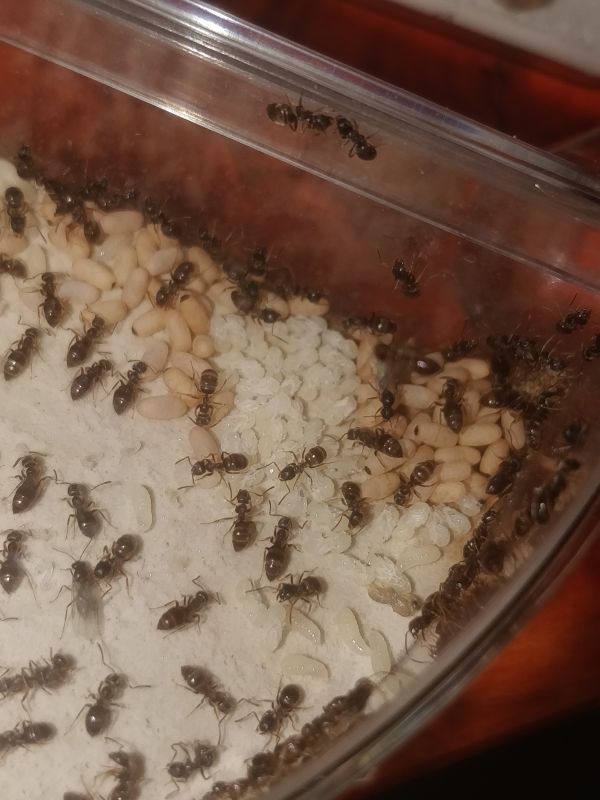
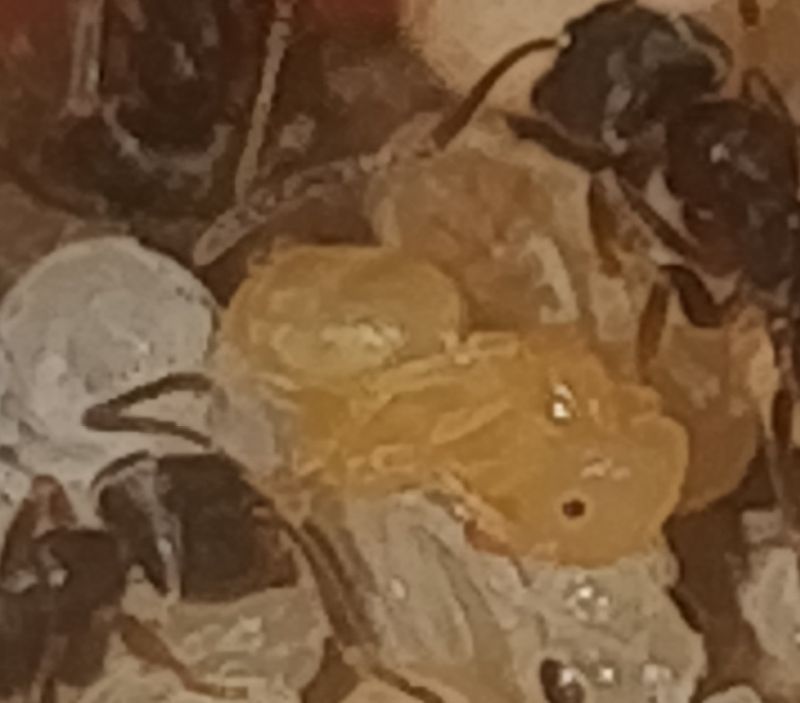
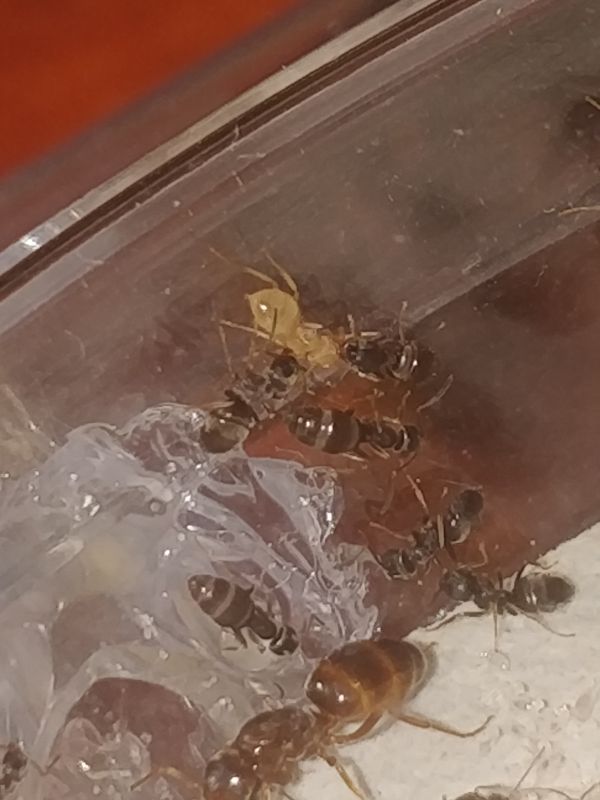
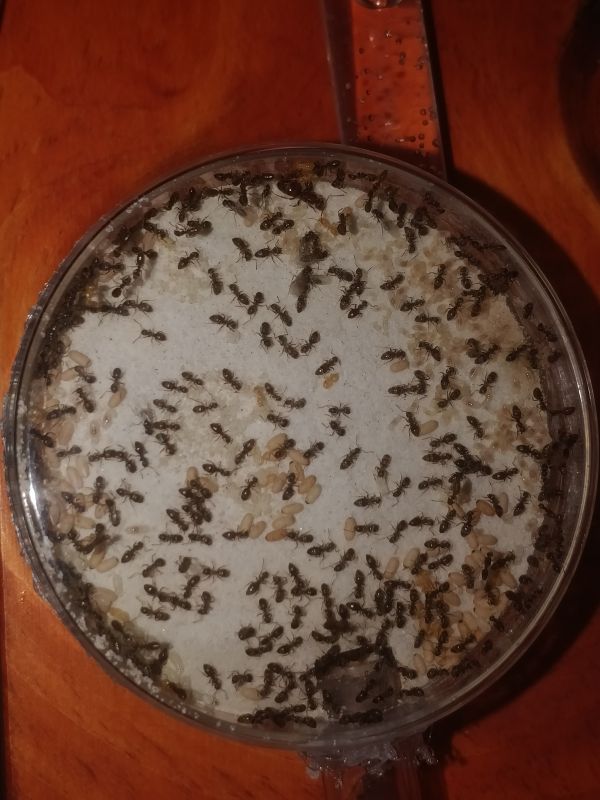
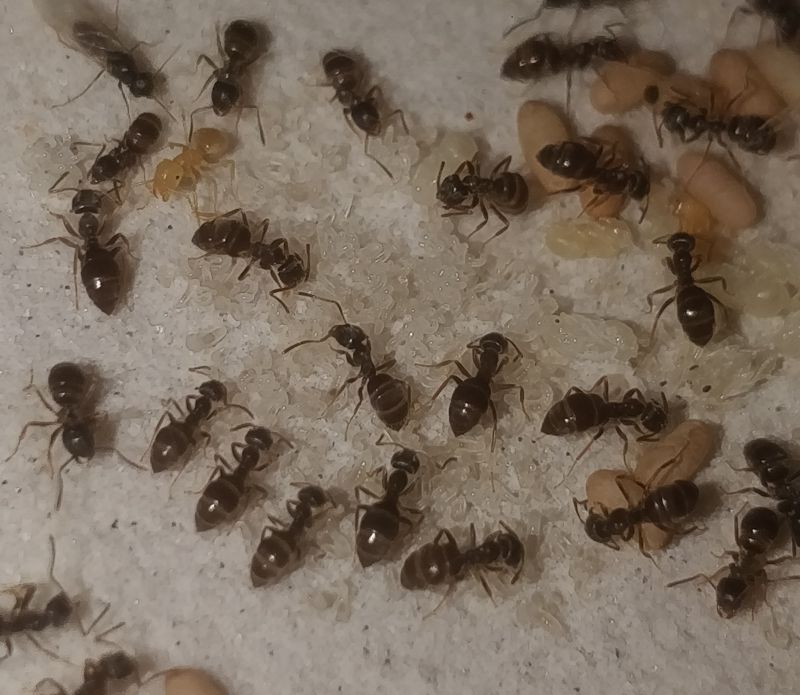
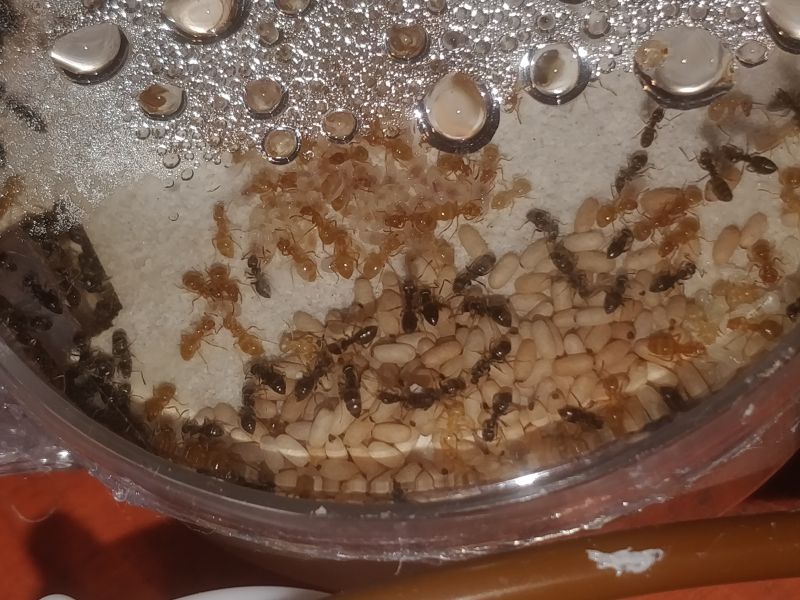
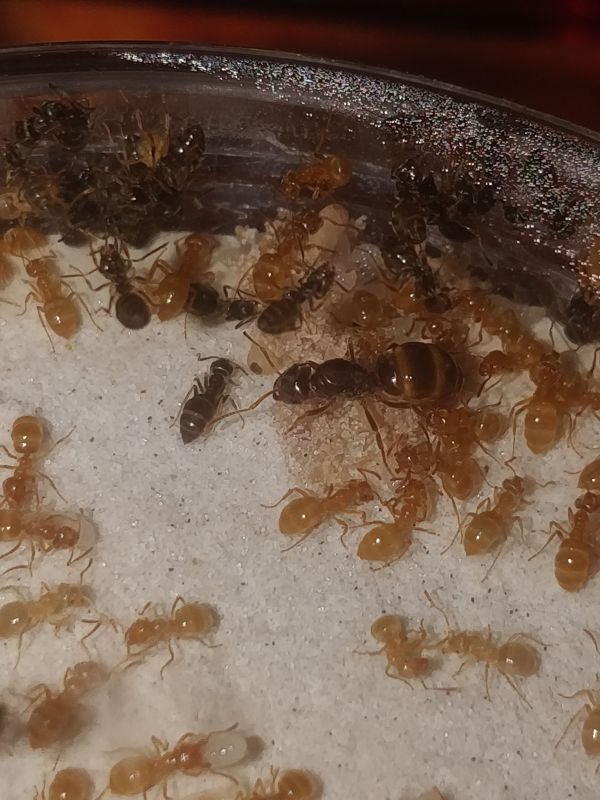
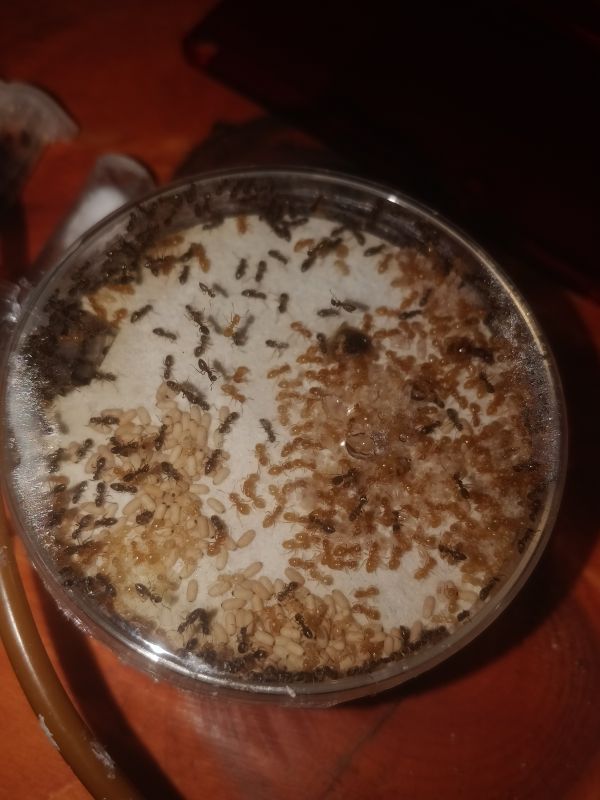
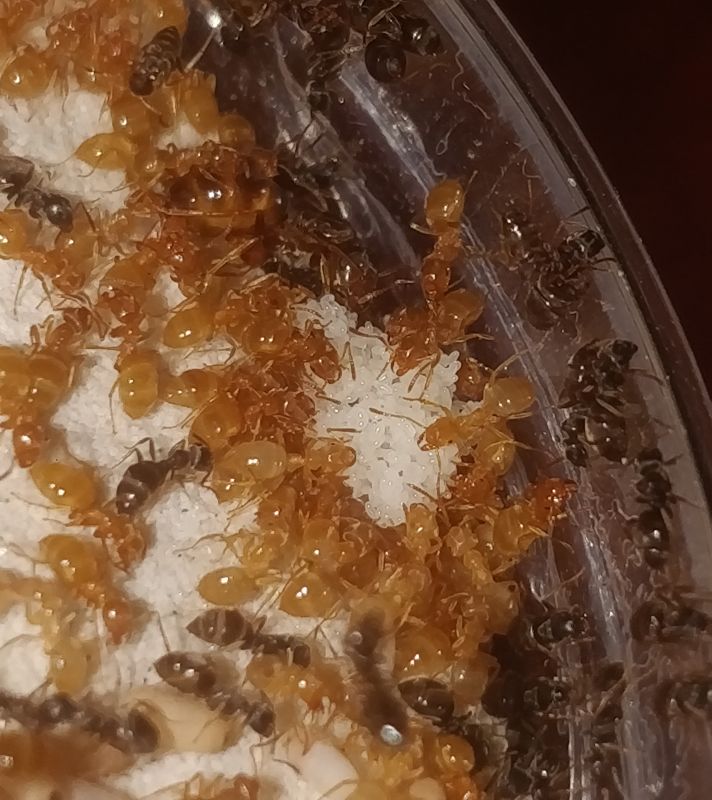
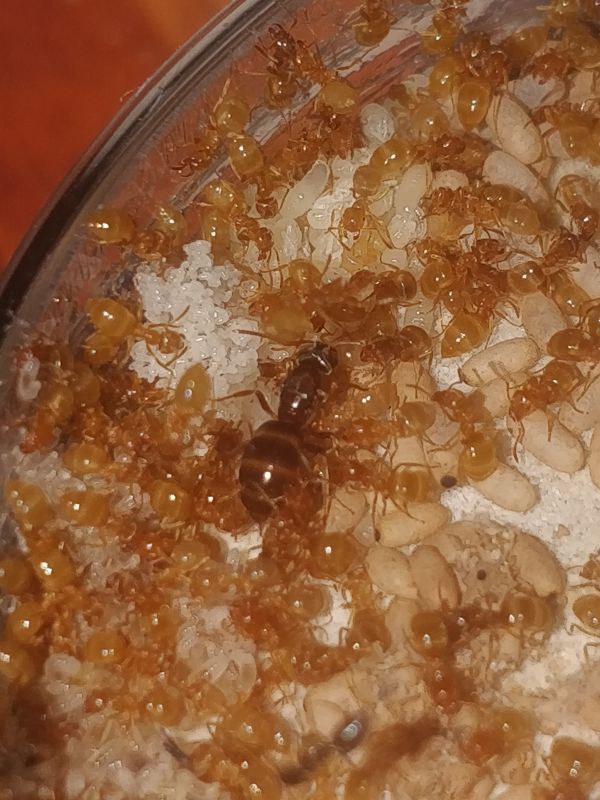
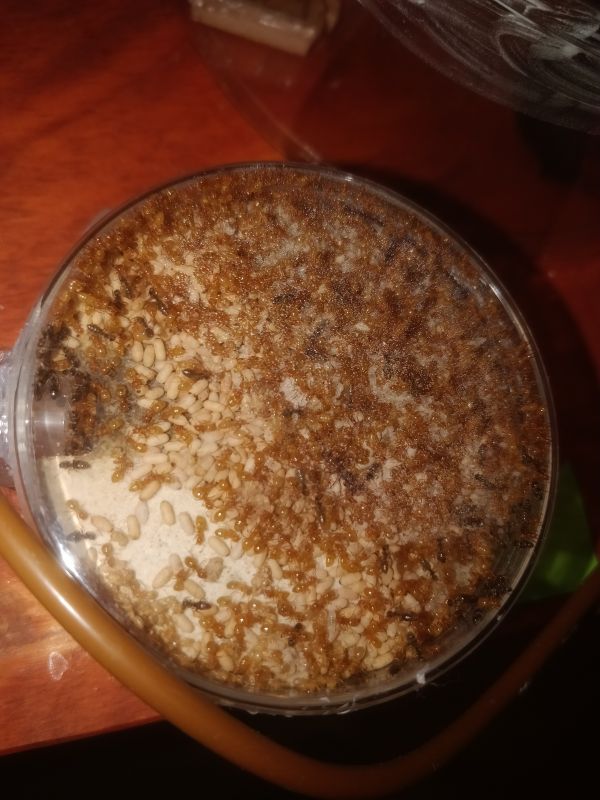
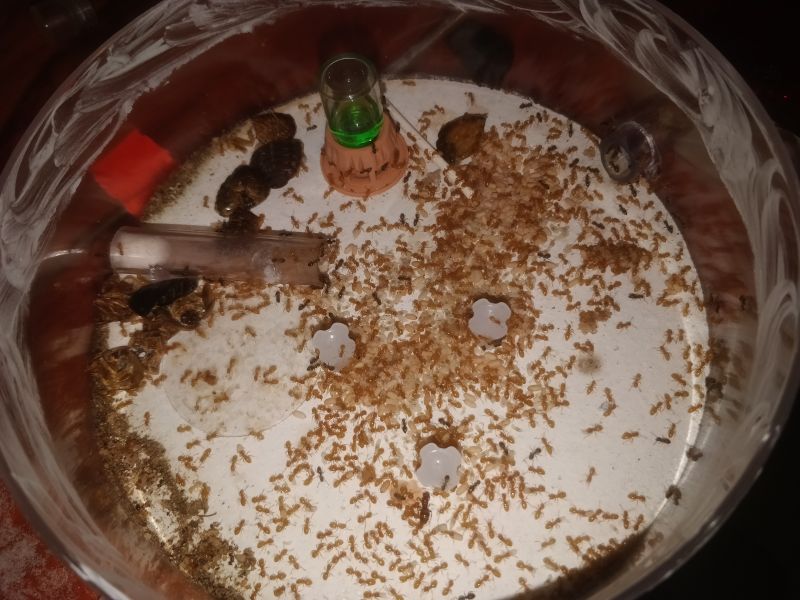
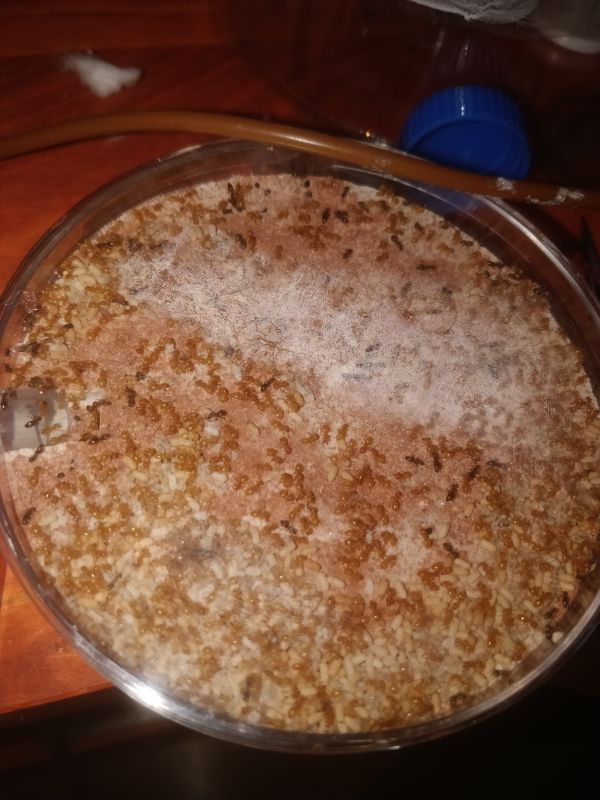
Myrmica punctiventris + others
From the same log, I was able to collect a colony of some small-medium sized Myrmica species. The colony had only one queen, hidden in the very last chamber I searched. They were very easy to collect because every ant in the colony played dead instead of running away when I opened their nest. Myrmica were very common in the area, and I saw a lot of workers and even queens just wandering around. I experimented with collecting the individual queens I found and tossing them together with a random worker or two I found. They always got along, so I assumed the whole area was one large polygynous colony. In total, I collected a colony with a queen and a few dozen workers, and three individual queens, each accompanied by a couple random workers I threw in with them. When I got home, I put the colony in a tubs & tubes setup, and after giving them a little while to settle in, I introduced one of the queens + couple workers. Against my expectations, there was some aggression. The introduced workers and queen weren’t being immediately killed, but they were being grabbed and dragged around. In response, they would usually play dead. Since it wasn’t a full-out killing-level aggression, I left them together overnight to see if it would change. The next morning they were behaving the same way so I separated them. Despite only introducing a queen and a couple workers, I saw way more workers being attacked than I added, which I’m still not sure about. The workers that were being attacked continued to be dragged around for a few days until they died, then they continued to drag the bodies. I put the three other queens plus some workers in a tube together, and they didn’t attack each other. But once they were sitting next to each other, I noticed that there were three distinct sizes of queen, and two sizes of worker. The majority of workers were smaller, but I saw a couple larger workers in the 3q tube. The largest queen is larger than any of the workers, and slightly redder than the other queens. The smallest queen is the same size as the smaller workers. The medium-sized queen is larger than the small workers, and around the size of the large workers. The queen of the main colony looks like a medium-sized queen. The small and average queen got along and huddled together by one end of the tube, along with the brood and a couple workers. The largest queen wasn’t attacked but was always sitting apart from the others. So I moved the large queen plus the couple large workers to a separate tube. In the end of this mess, I have a 1q colony with a few dozen workers and a lot of larvae, a 2q tube with the small and average queen (maybe the small queen is just a microgyne of the same species?), and a 1q tube with the large queen. Once they get new generations of workers that are less mixed-up I’ll try keying them.
Writing this part a little later. I’ve determined that the main colony is M. punctiventris, but I’m still working on an ID for the others.
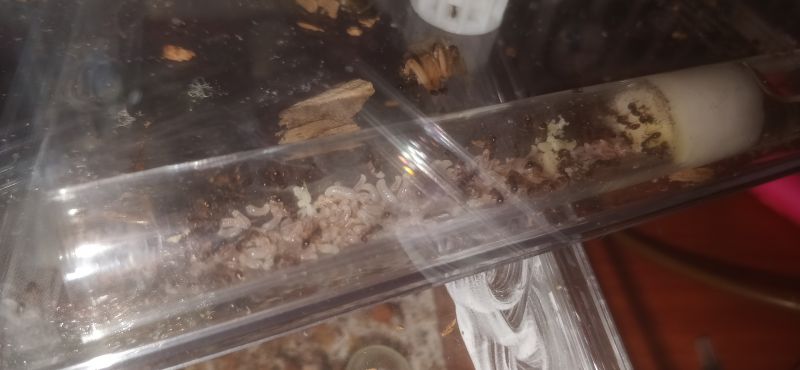
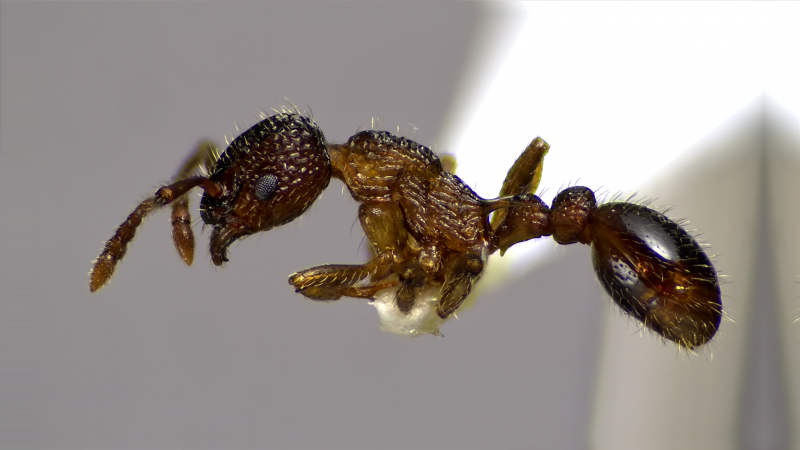
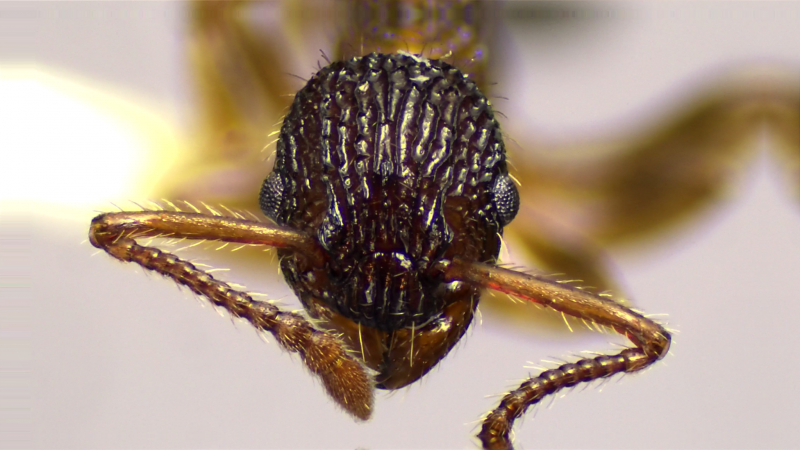
Pogonomyrmex occidentalis
They’ve gone back to storing their seed pile in the outworld. I woke up today to see a newly eclosed female alate in the nest. I’ve noticed this colony is prone to accidentally creating alates. They’ve produced a couple male alates in the past, but they’ve always eaten them before they eclosed. I’m guessing they just accidentally let a larva get a bit too big. Especially because when compared to the colony’s queen, it’s definitely not full sized.
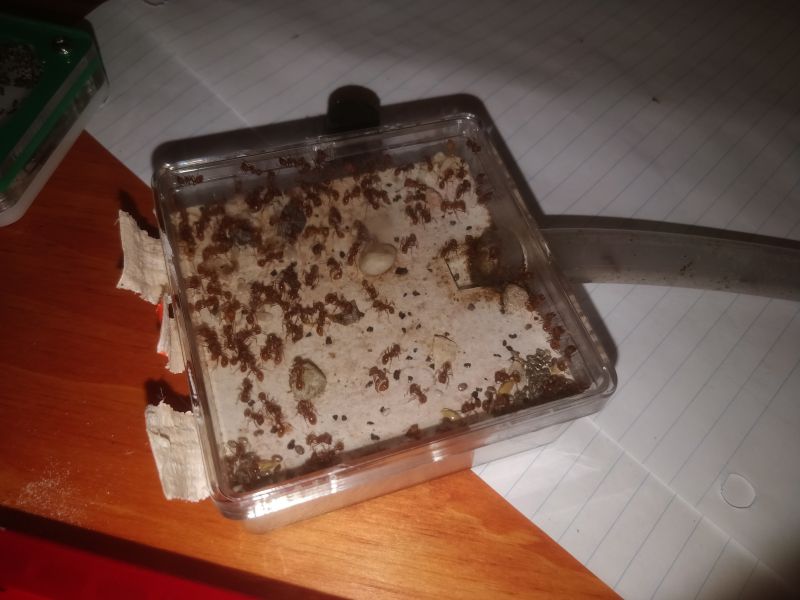
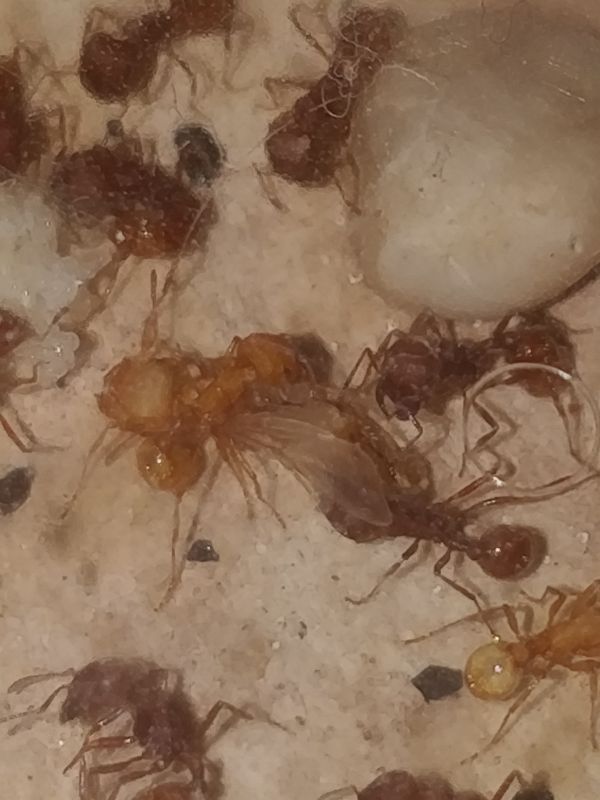
Tapinoma sessile
Alates and new workers have been eclosing, and the brood pile is looking pretty good. I was expecting a species that’s as opportunistic as T. sessile to provide a bit more difficulty, but it’s been completely smooth sailing. No escape attempts, no nesting in annoying spaces, etc.
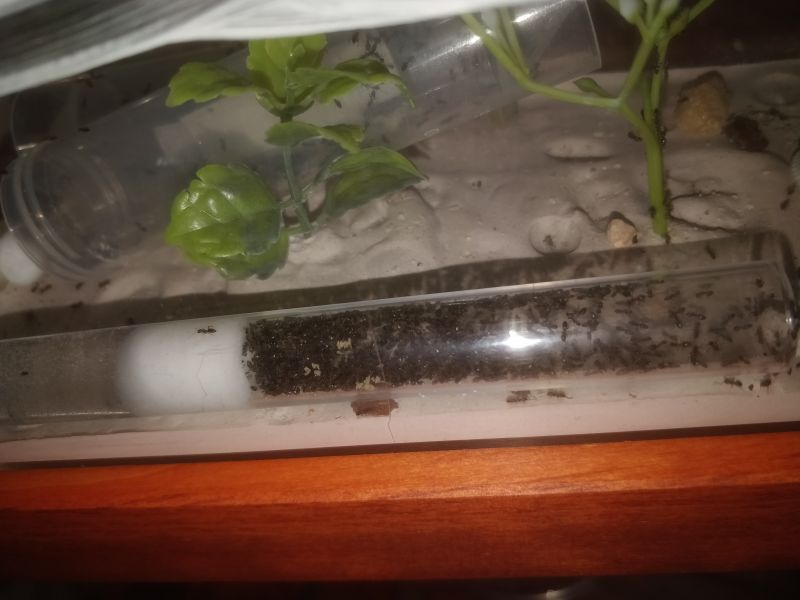
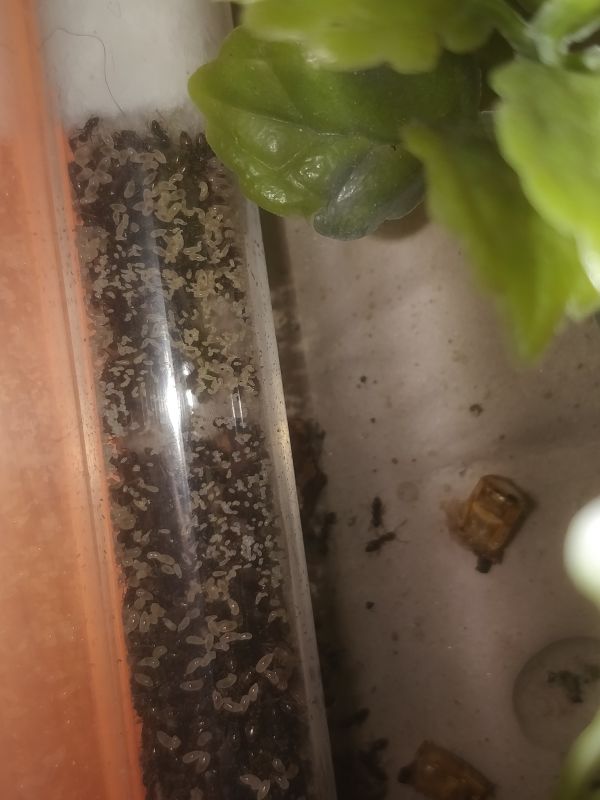
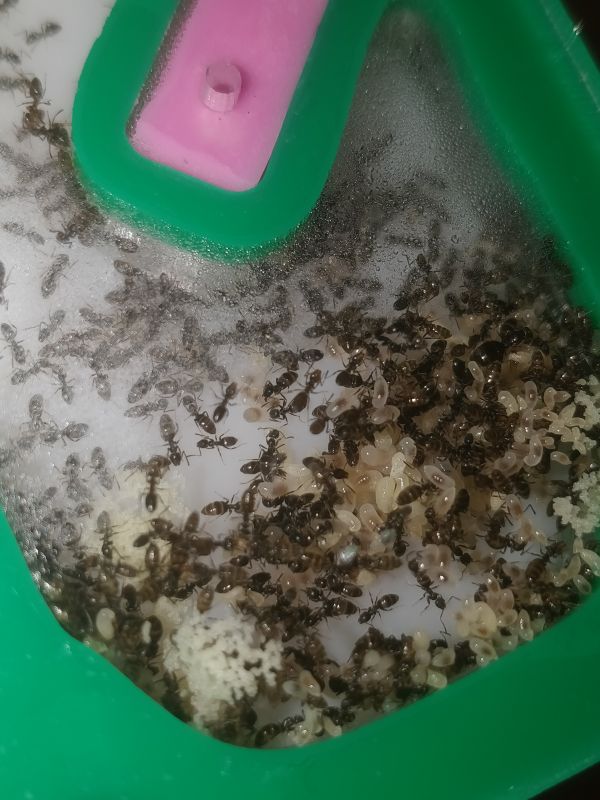
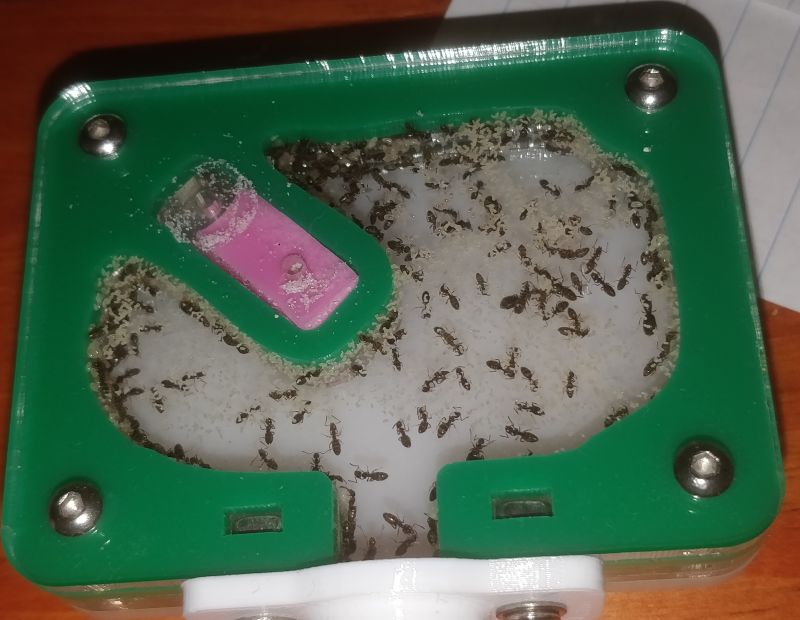
sessile larvae are a weird shape
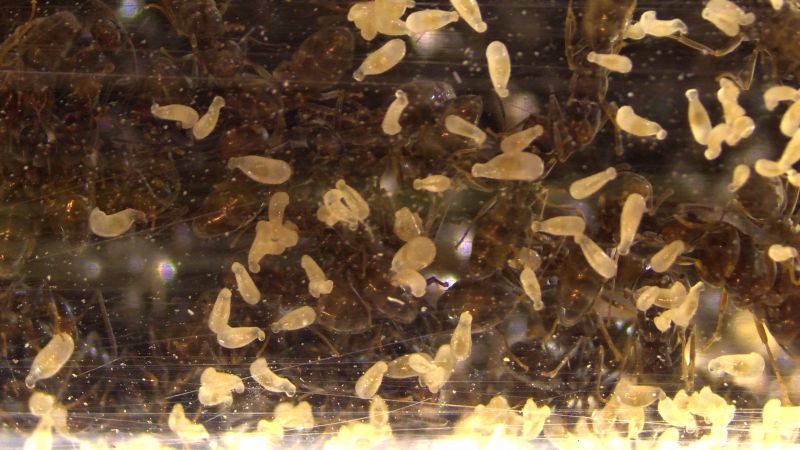
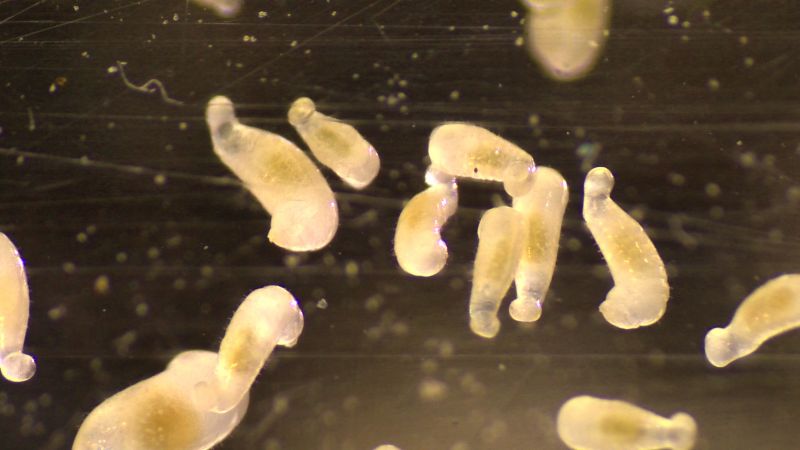
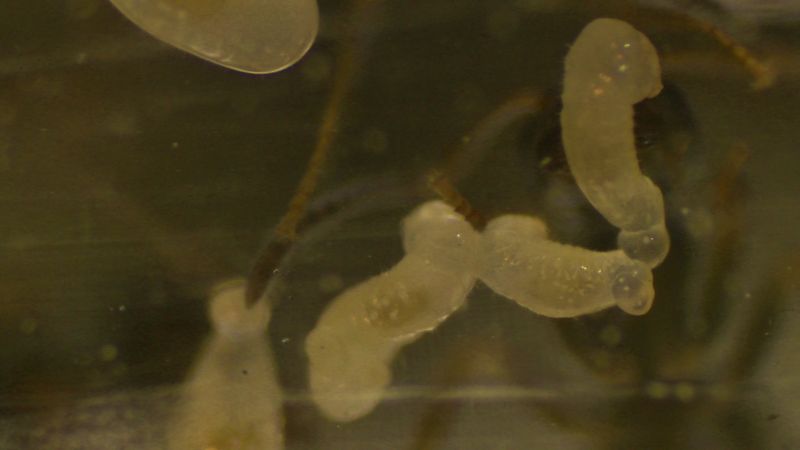
Temnothorax curvispinosus
I bought a colony of T. curvispinosus recently. They were originally in a plaster setup, which I placed on its side in an outworld. I made them a new nest that was very flat and made from woodfill filament, to mimic their natural nesting habits. The nest doesn’t have any hydration in it, but they should be able to get all the water they need from a water feeder in the outworld. I placed the new nest in the outworld to let them get used to it, expecting to have to move them forcefully later, but the next morning they were fully moved into the new nest. They have only 73 workers, but they’re at a mature size and producing males.
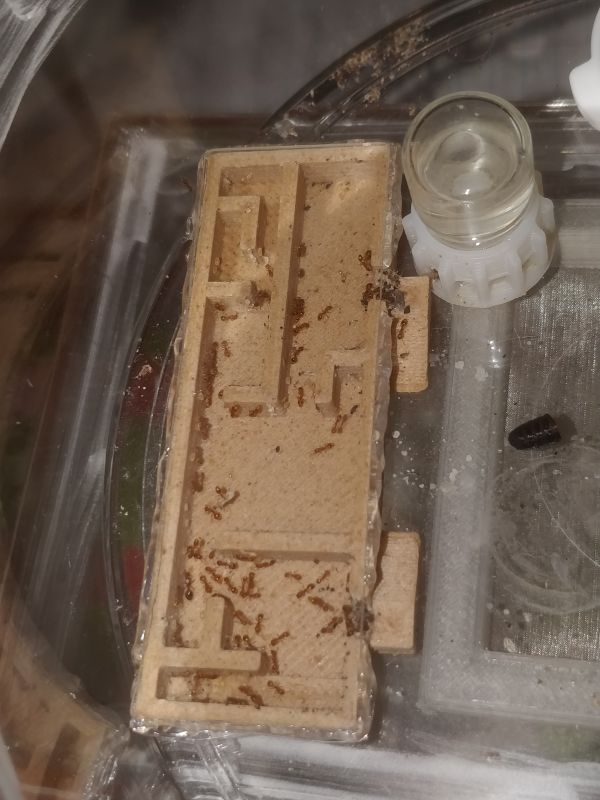
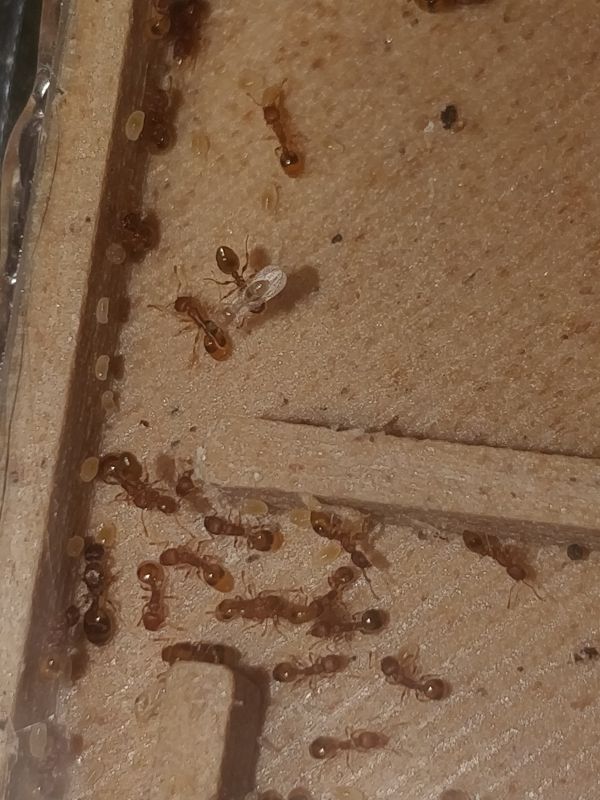
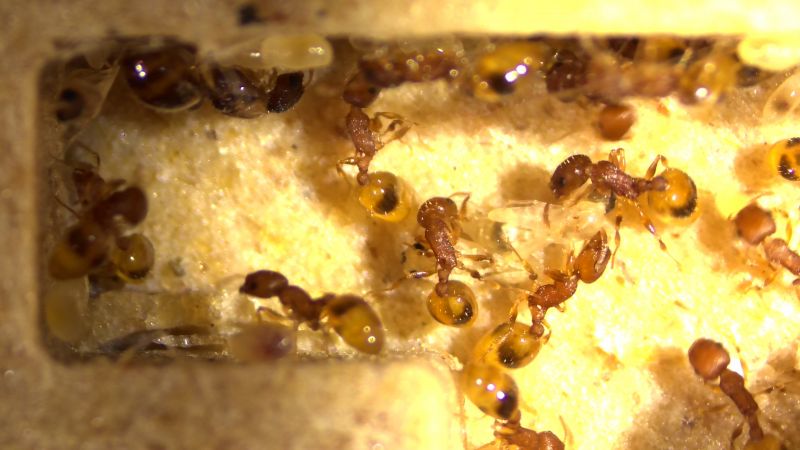
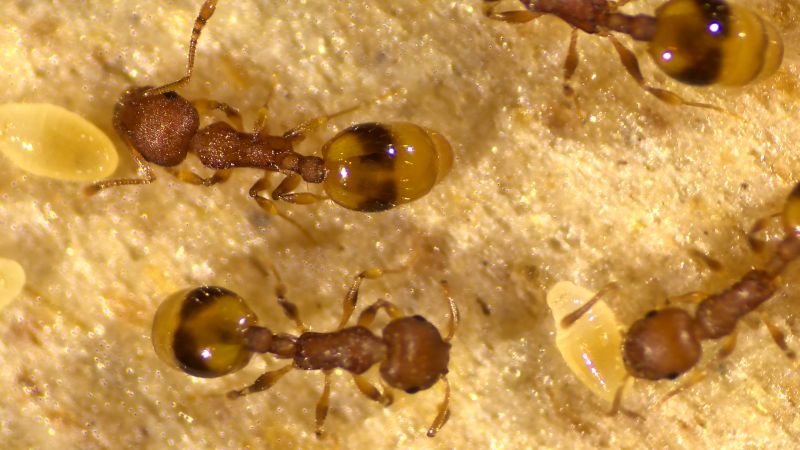
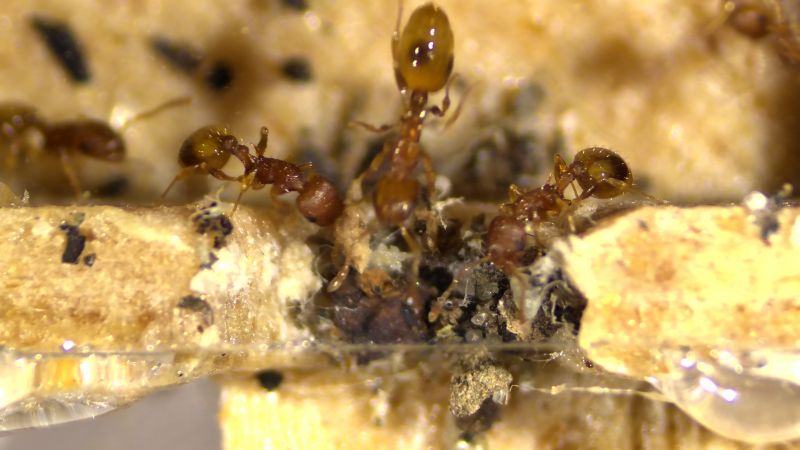
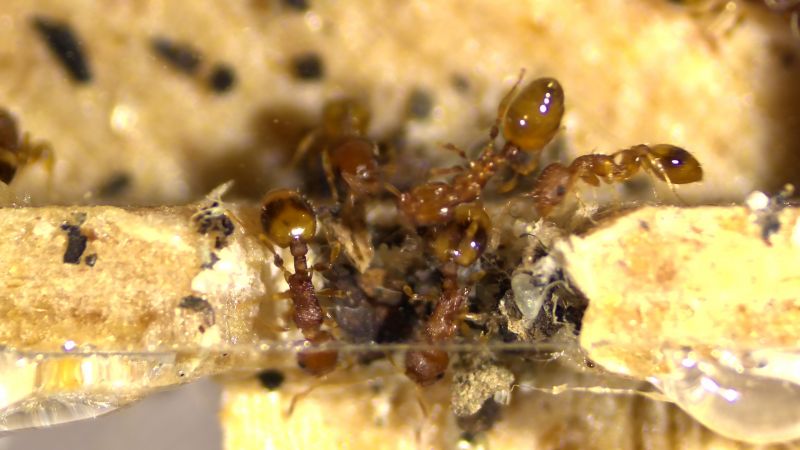
Tetramorium bicarinatum
Continuing to grow. They’re filling a 4in diameter petri dish nest plus their old almost 3x3in nest. I also have concrete proof that they’re inbreeding now. The past few days, I’ve seen 2-3 pairs mating in the outworld. I separated a couple of the mating queens plus some workers to make a new colony. 12 hours later, both queens were still coupled, and 24 hours later one was still coupled.
the colony when I first got them
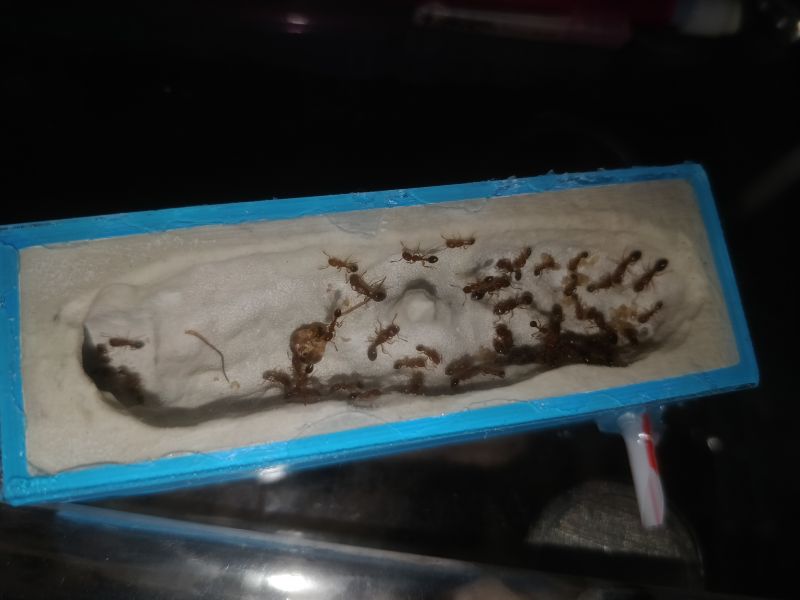
the colony's first alate brood
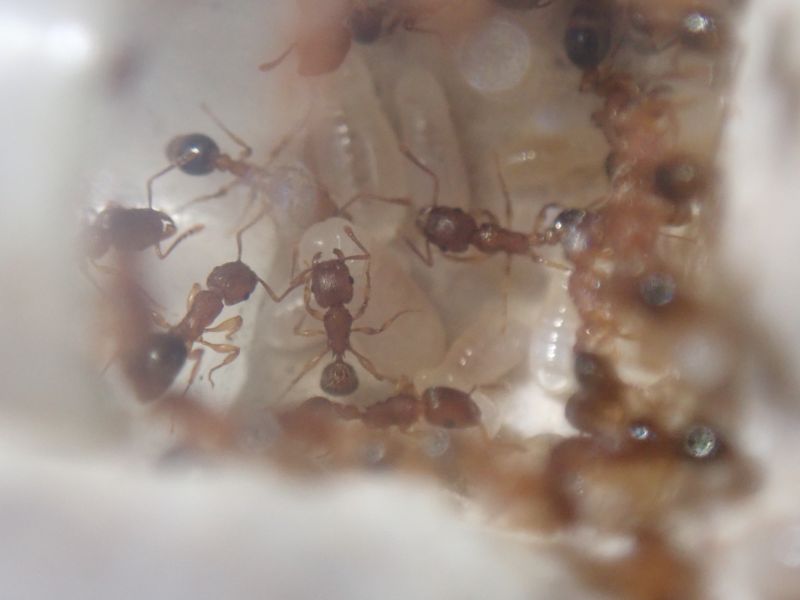
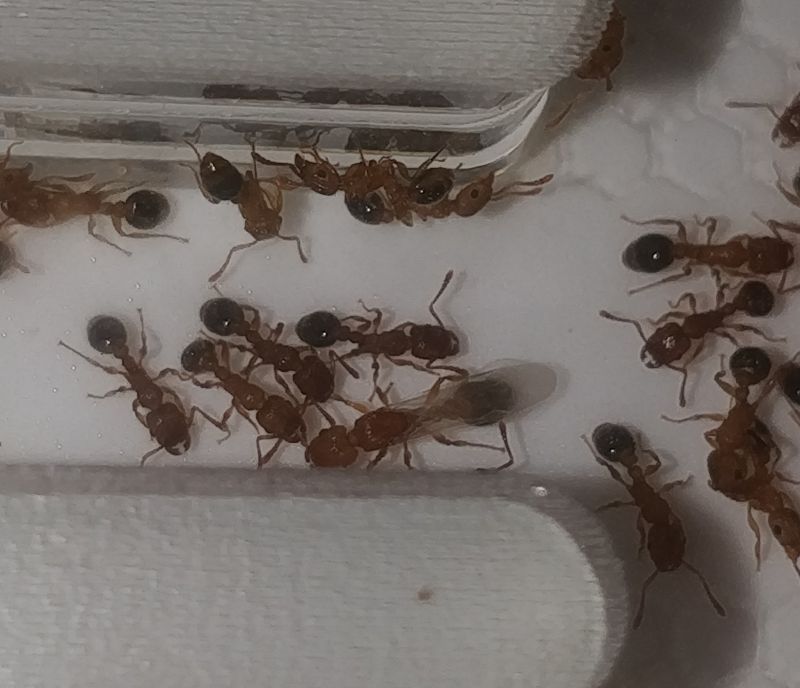
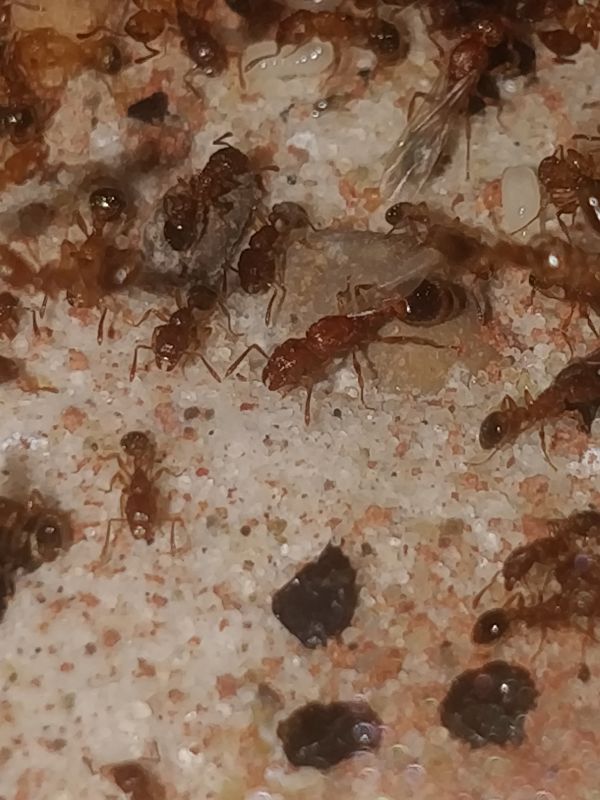
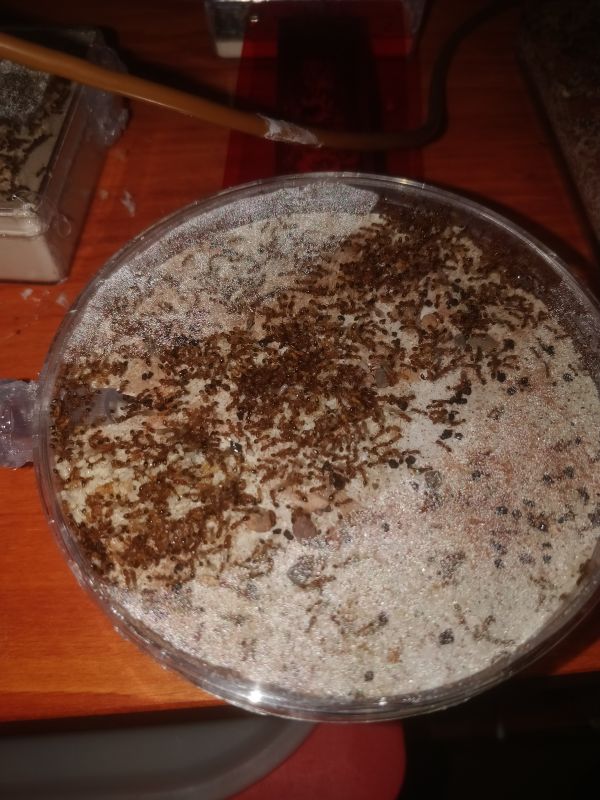
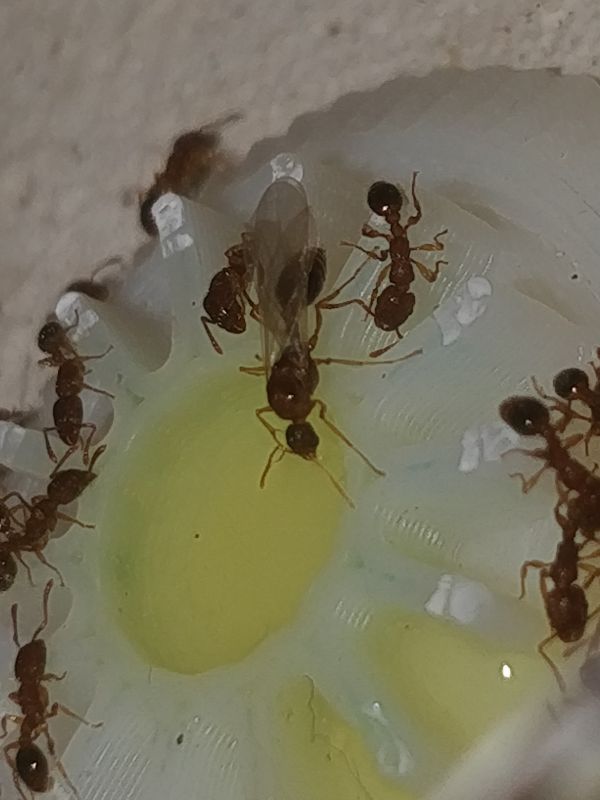
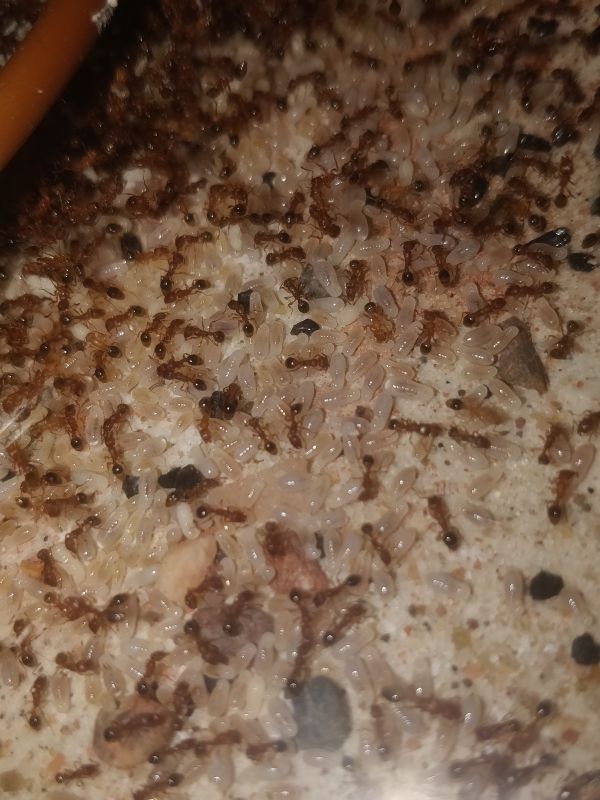
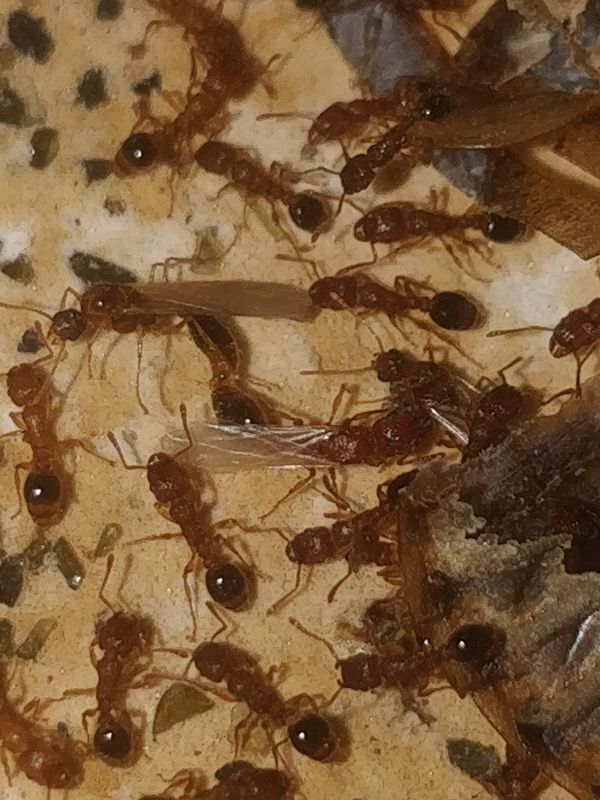
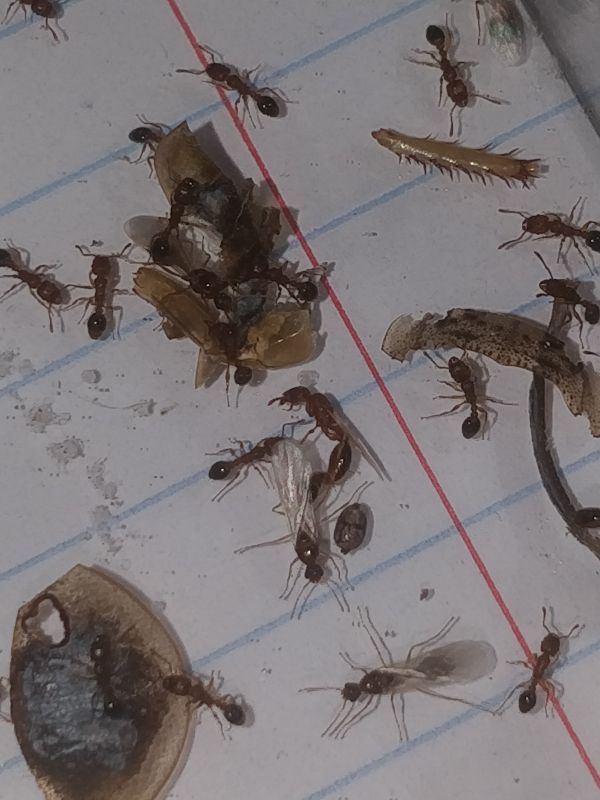
some photos I got of a dead queen and a gynandromorph from the colony
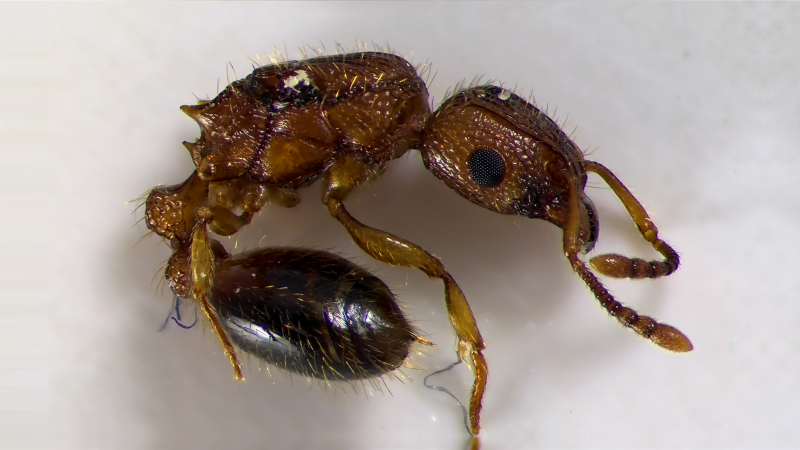
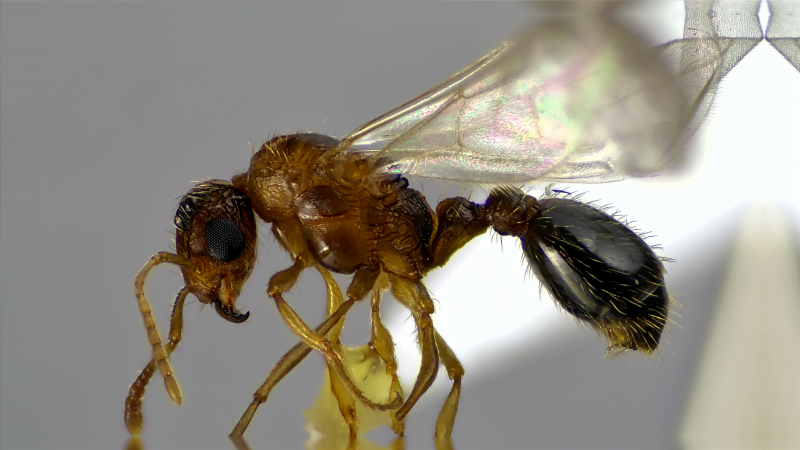
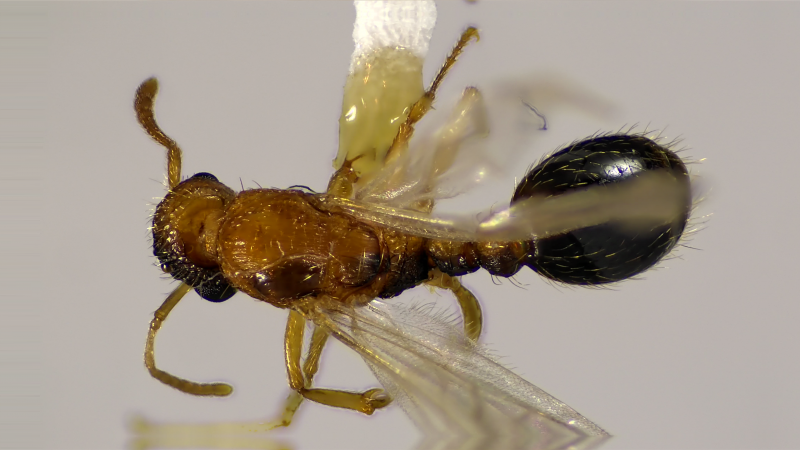
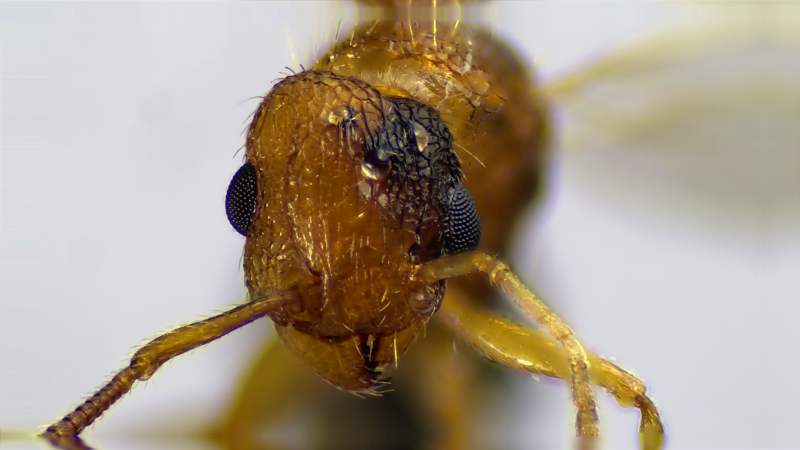
Bonus photos:
Lasius brevicornis (top) and Lasius neoniger (bottom) drinking sugar water
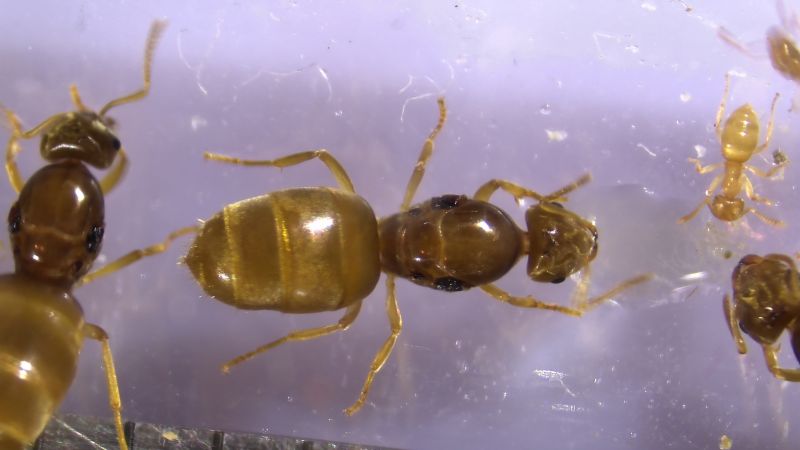
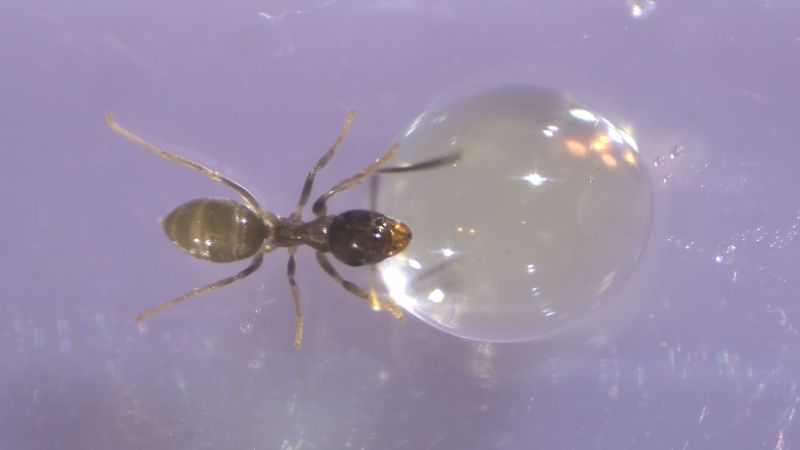
Edited by Mettcollsuss, June 18 2022 - 8:14 AM.



